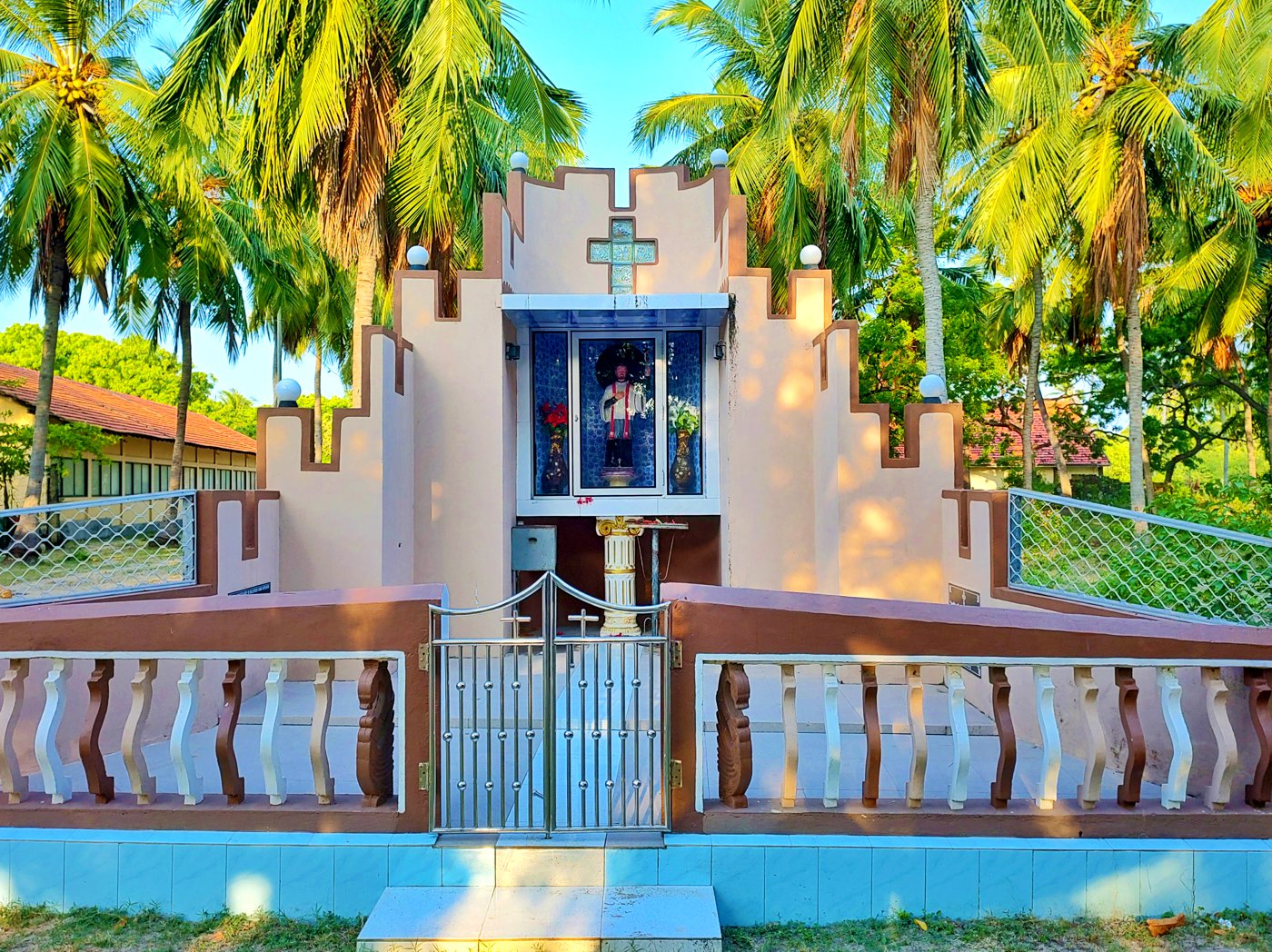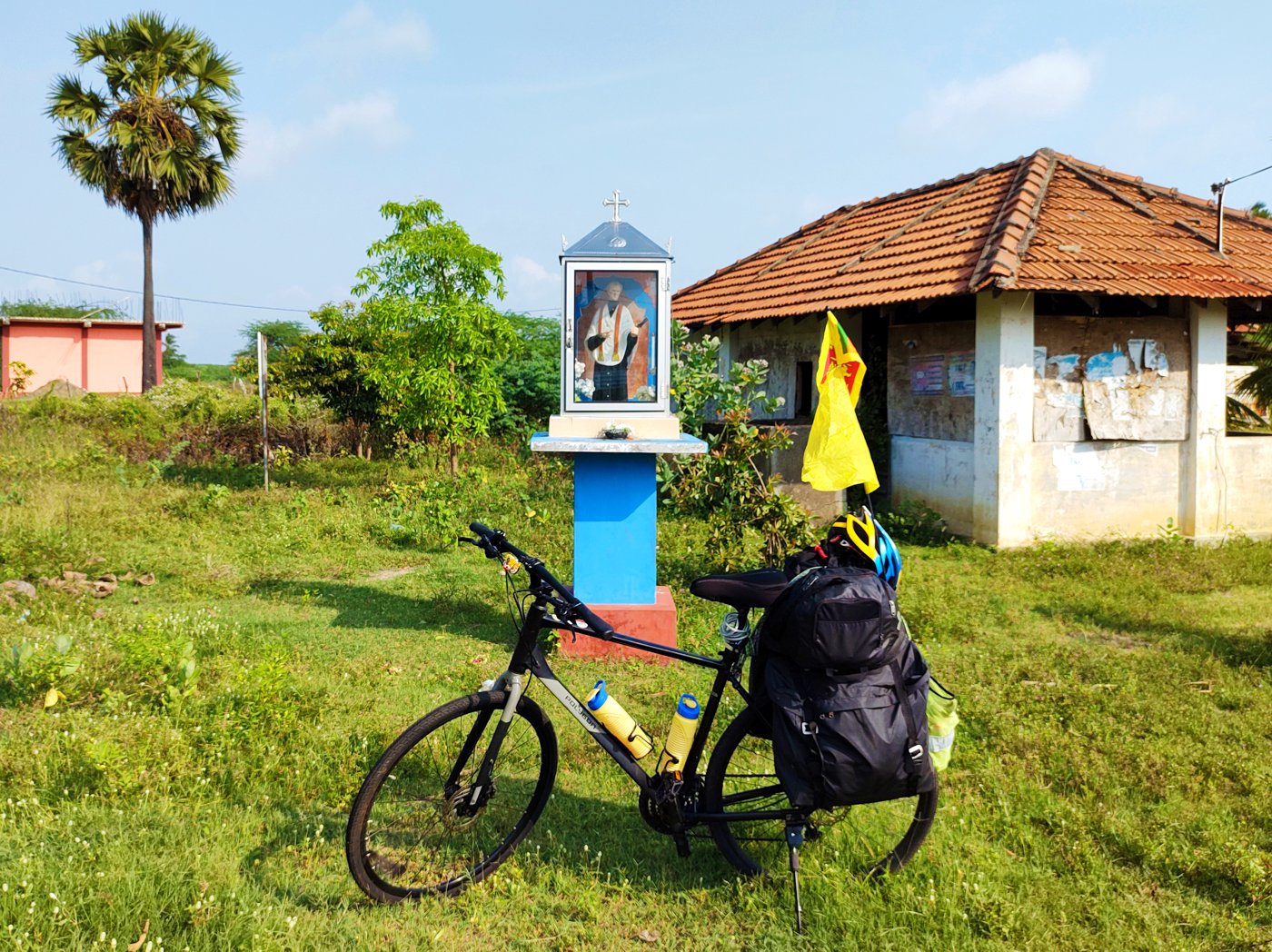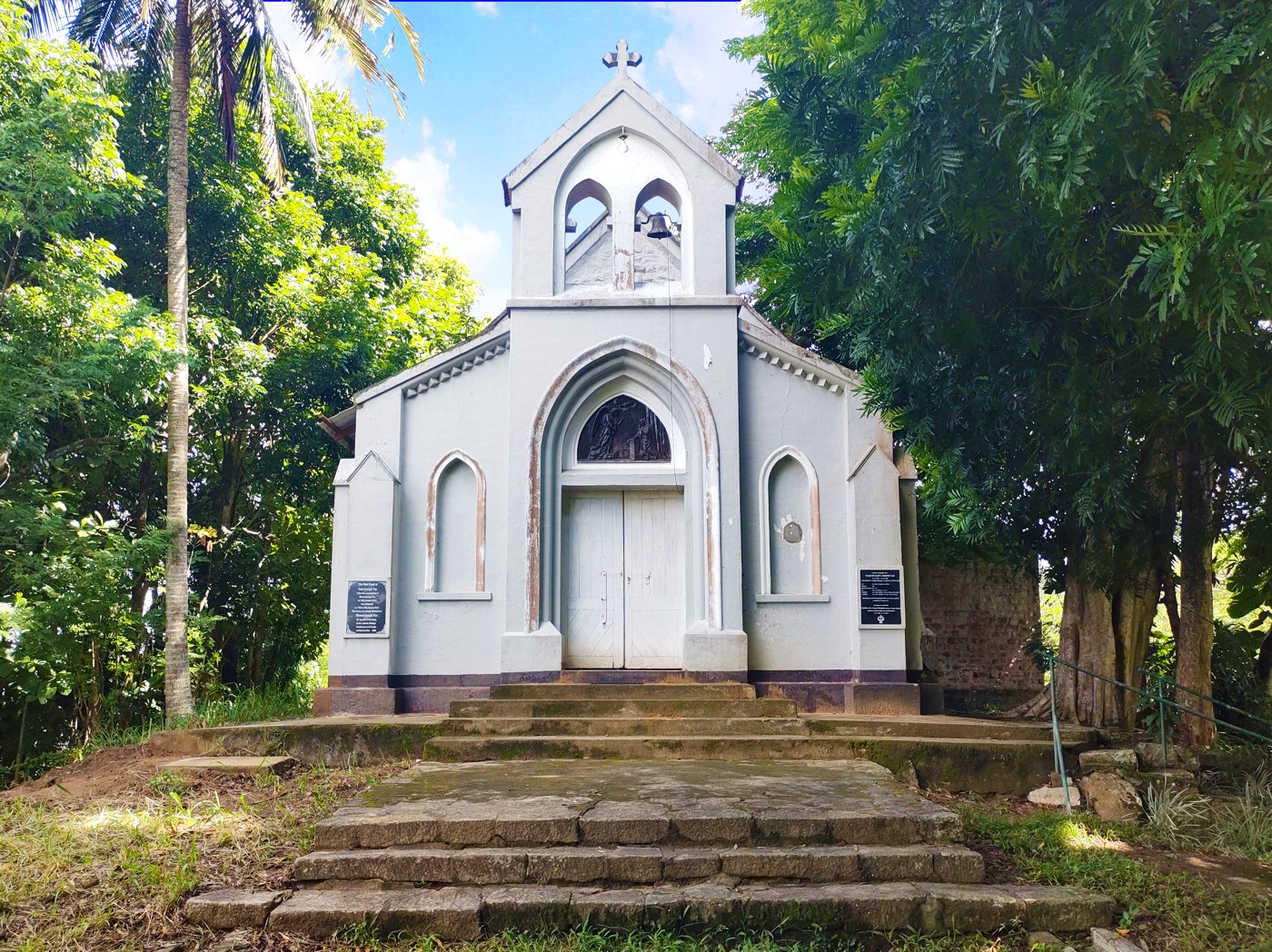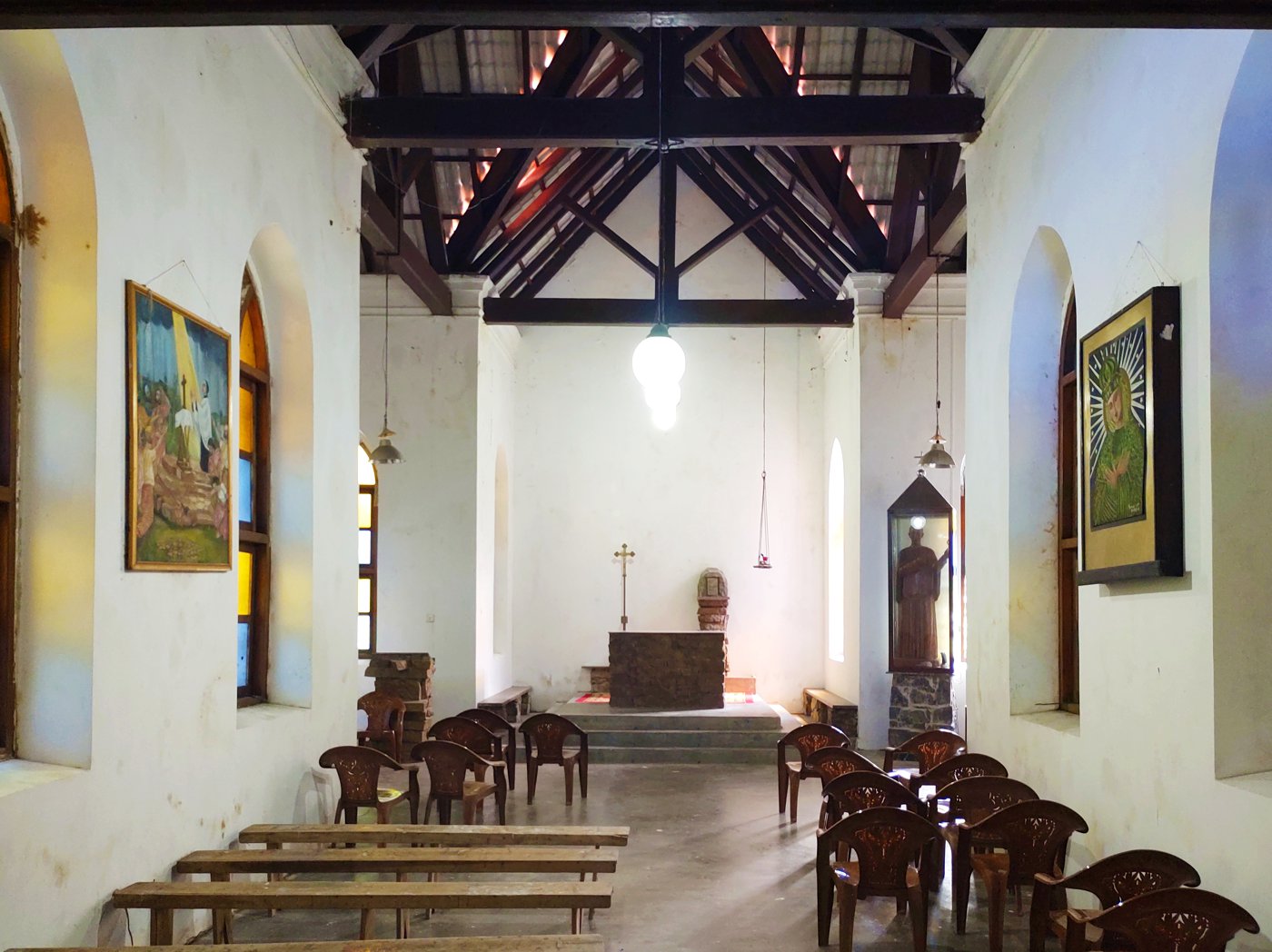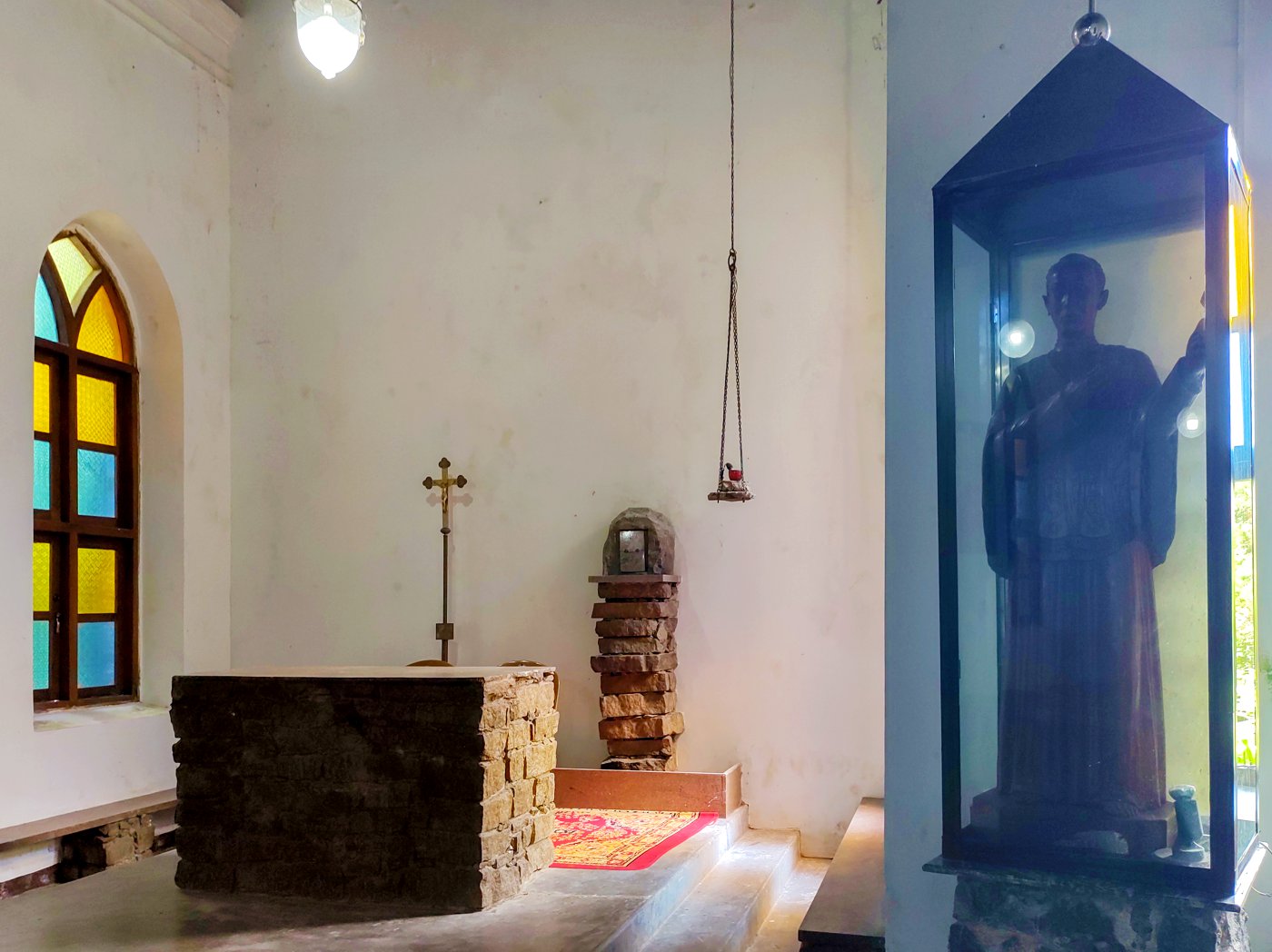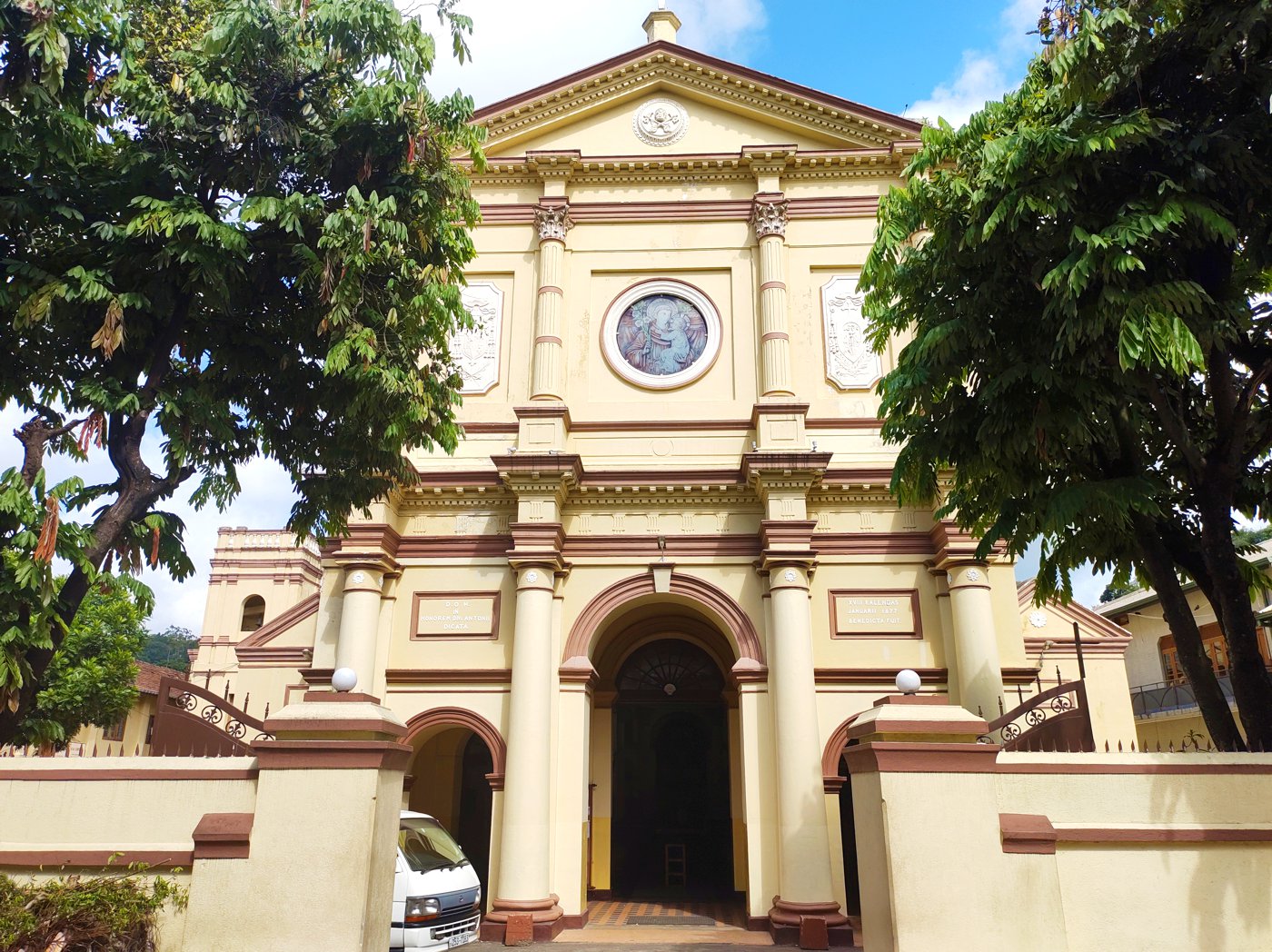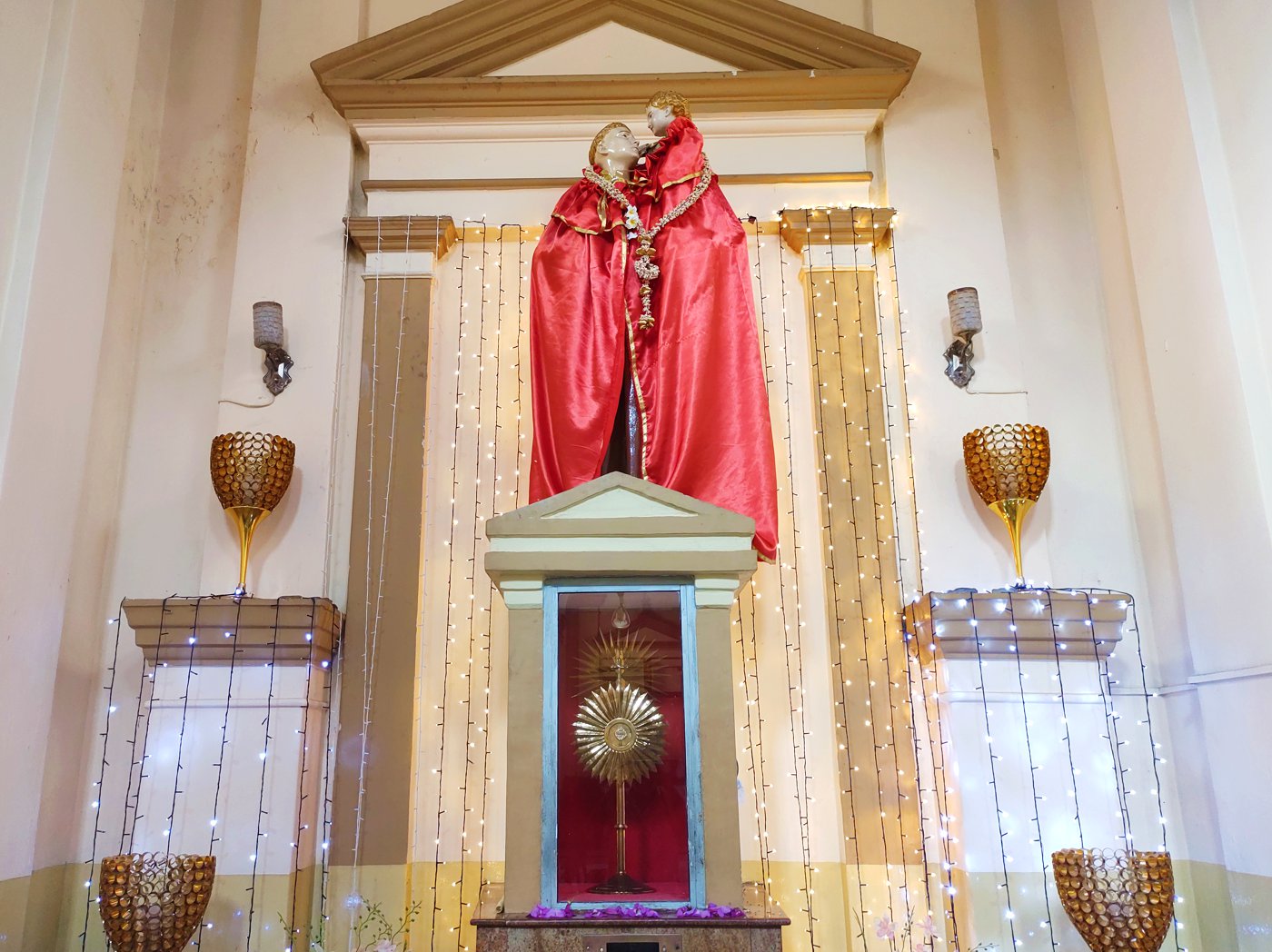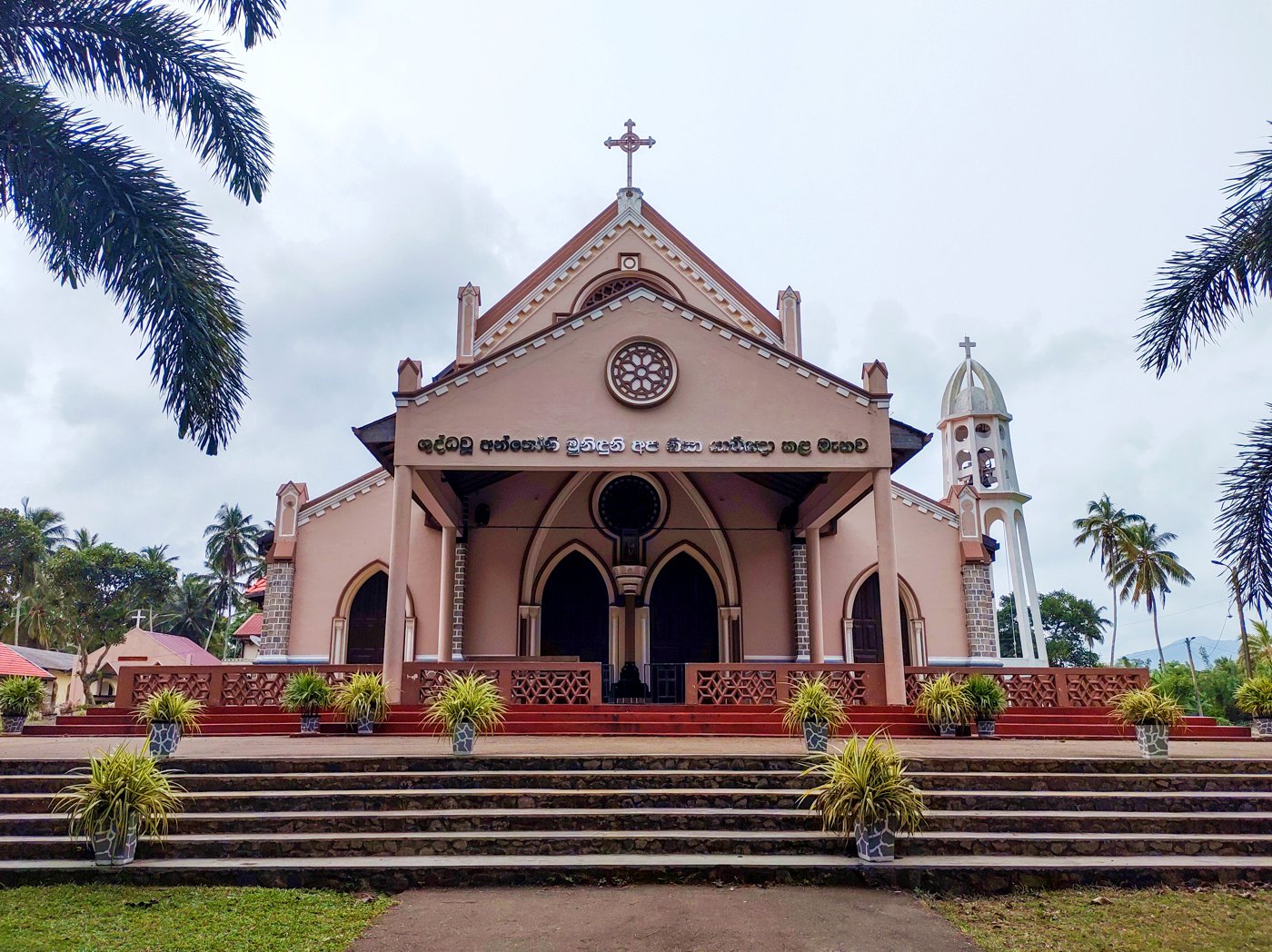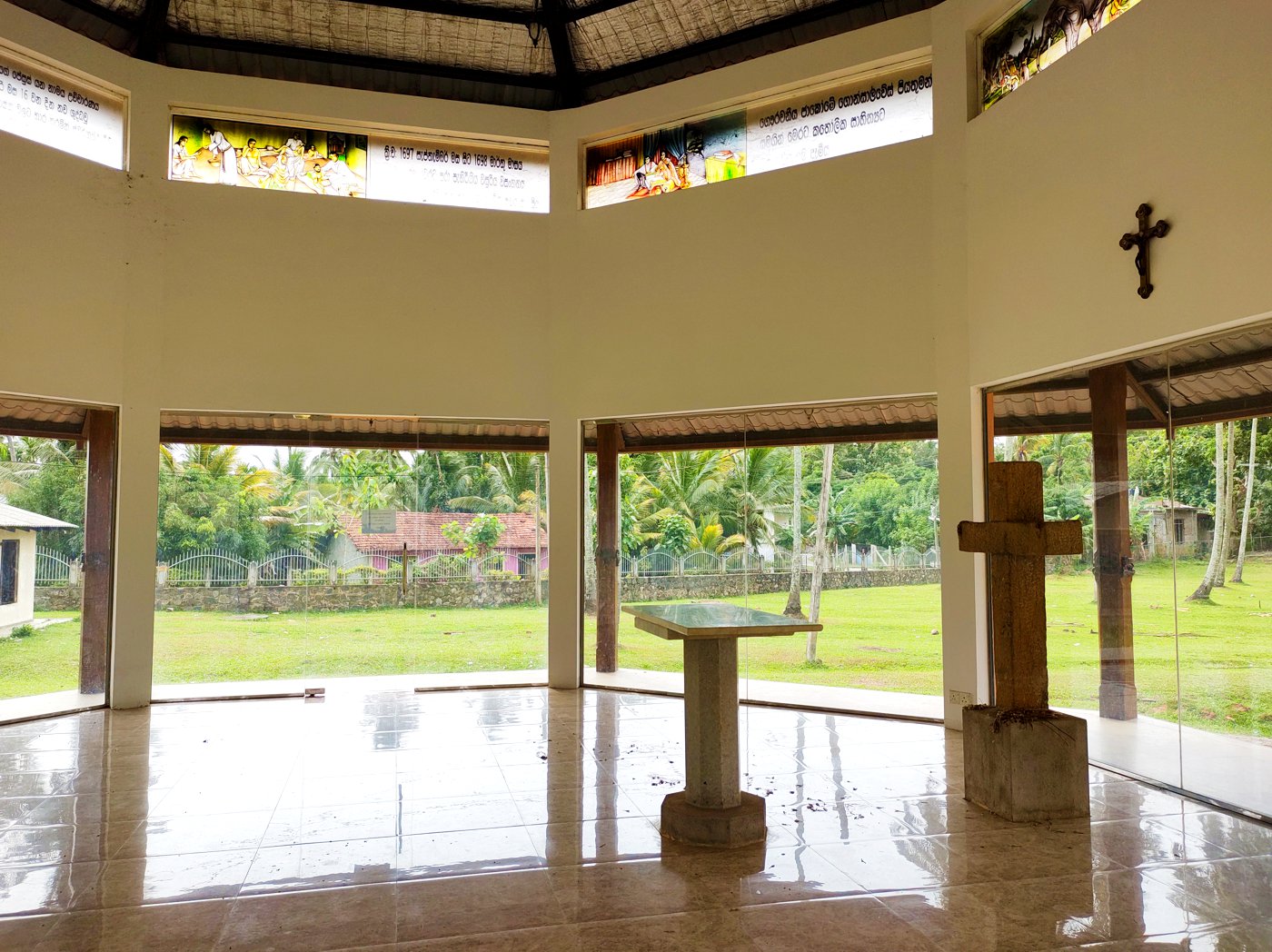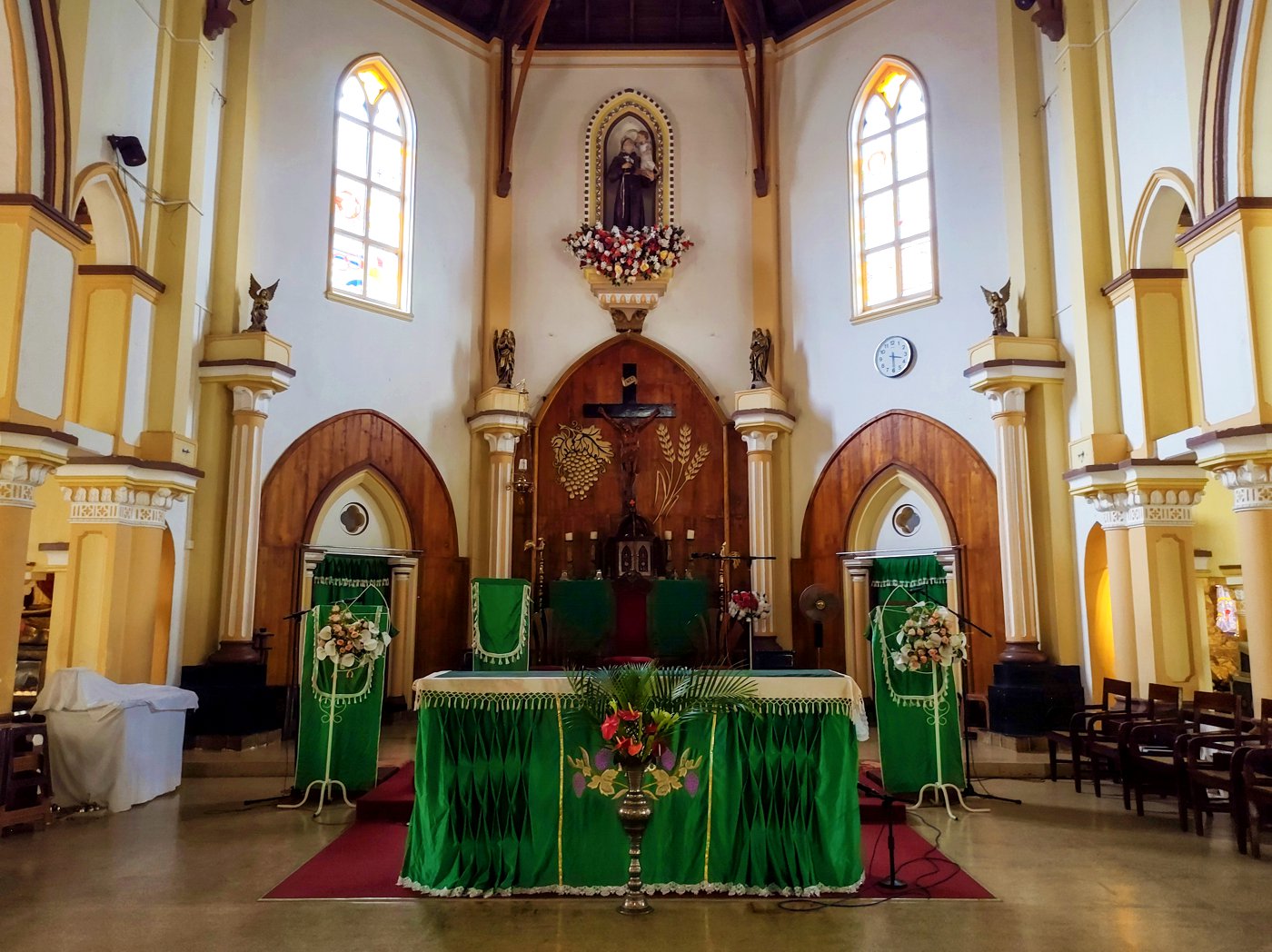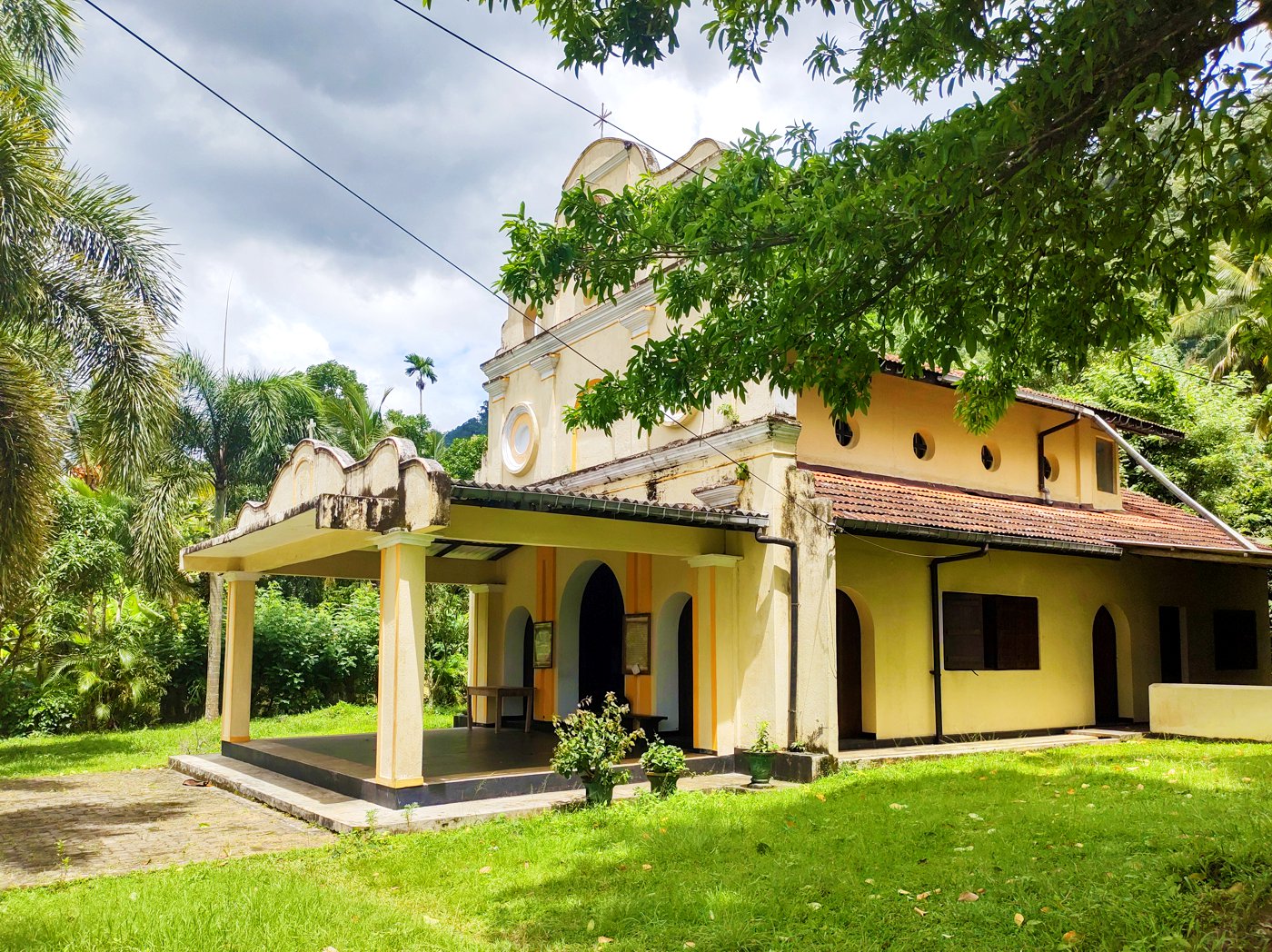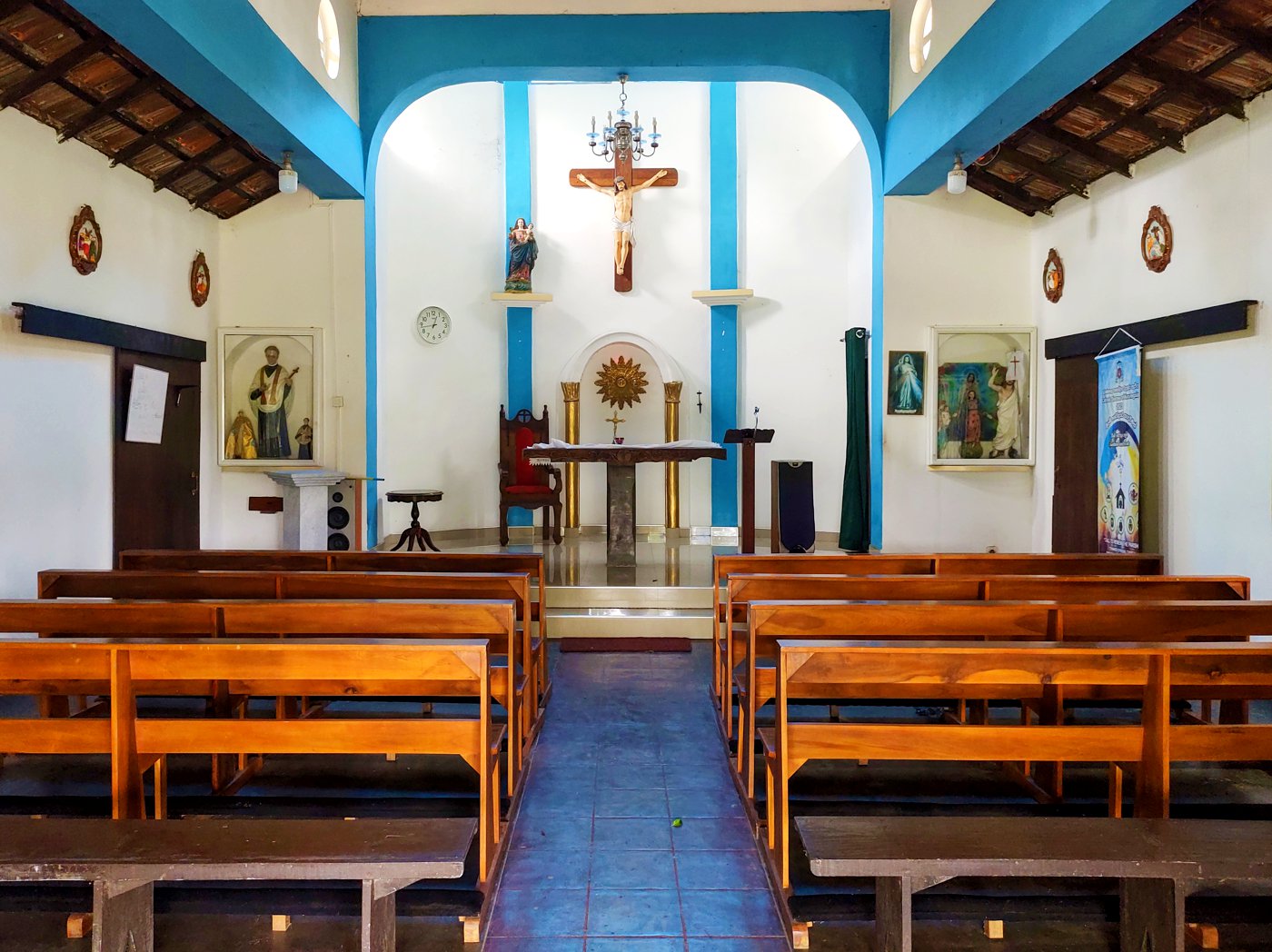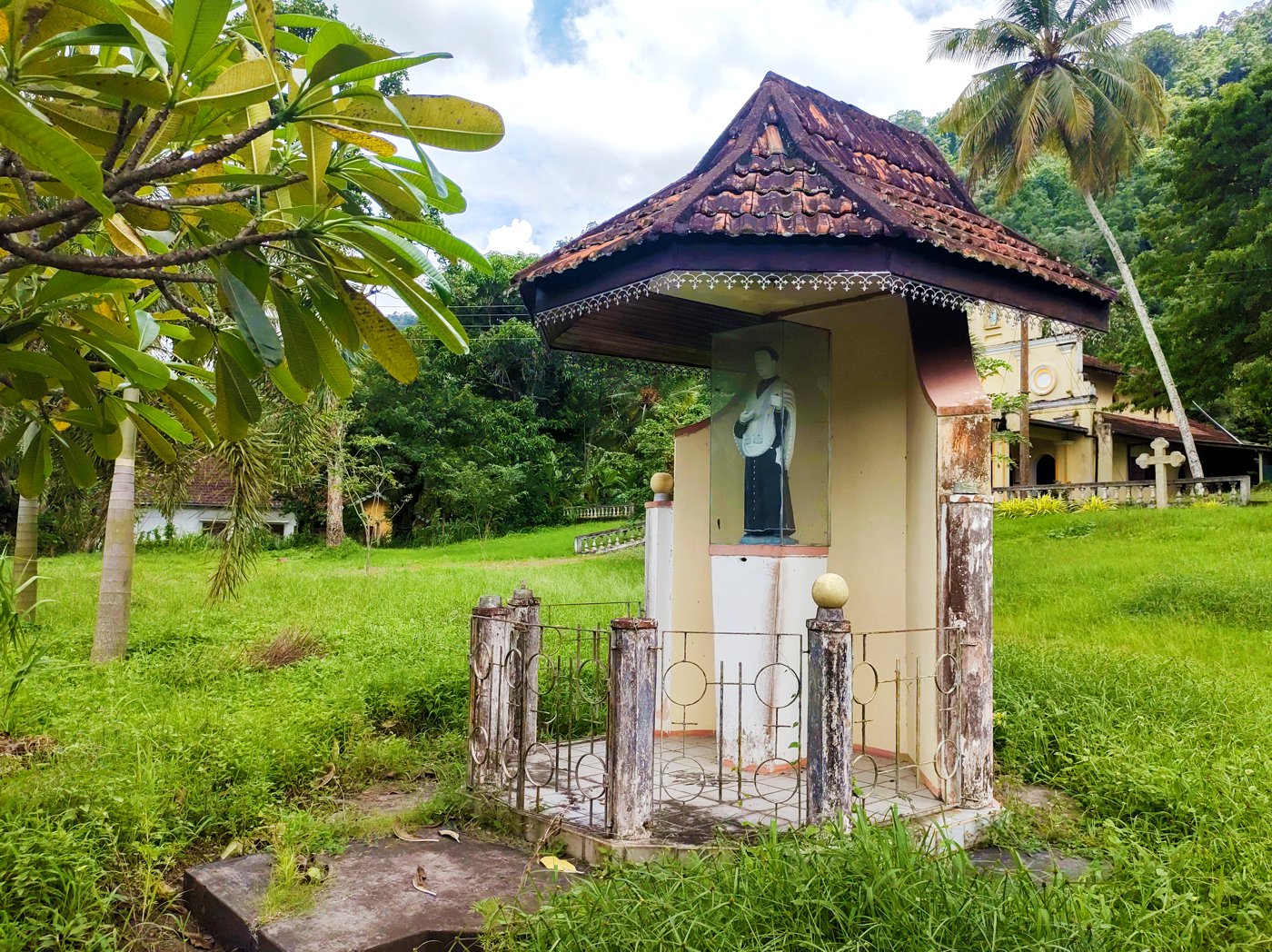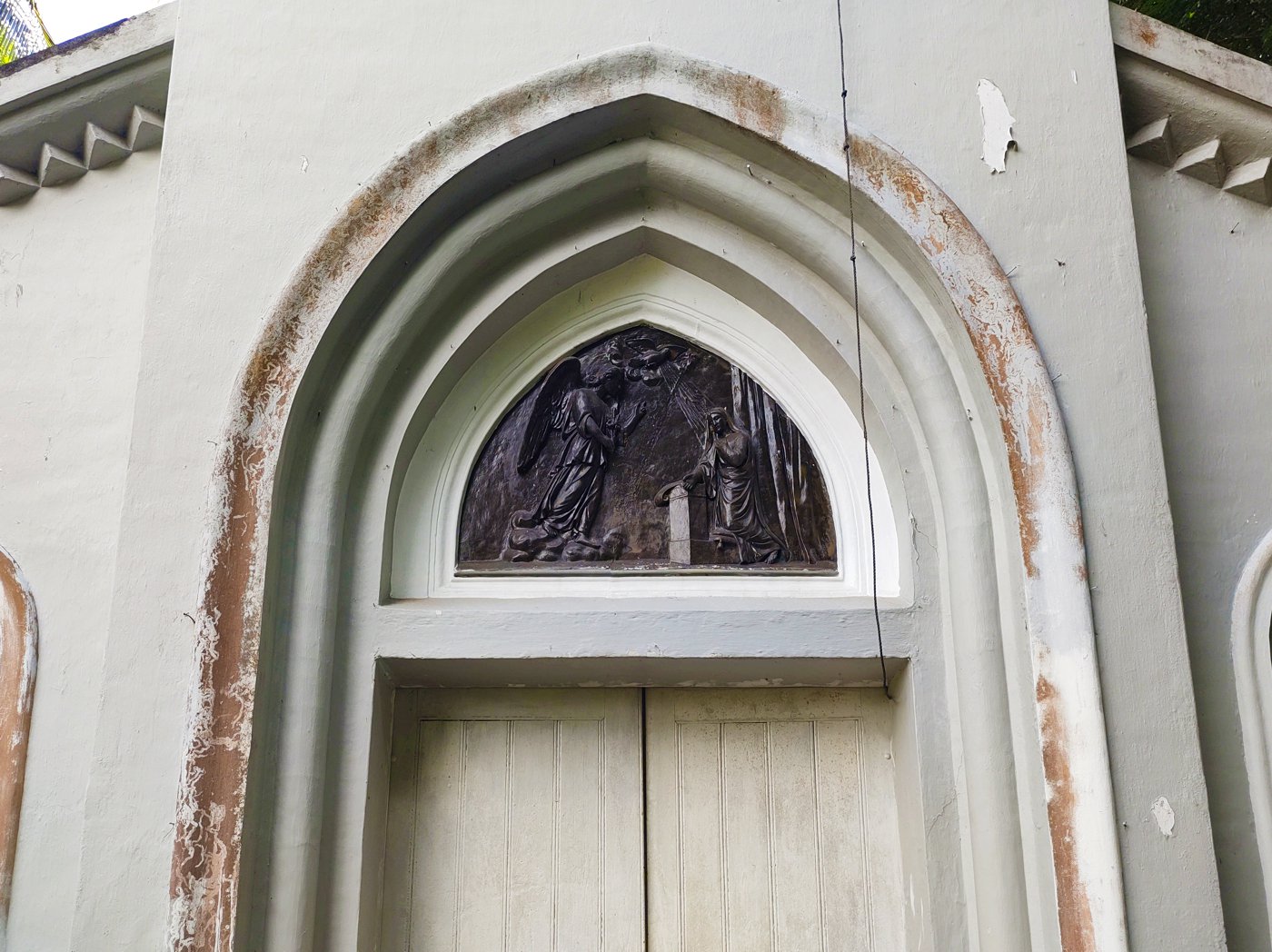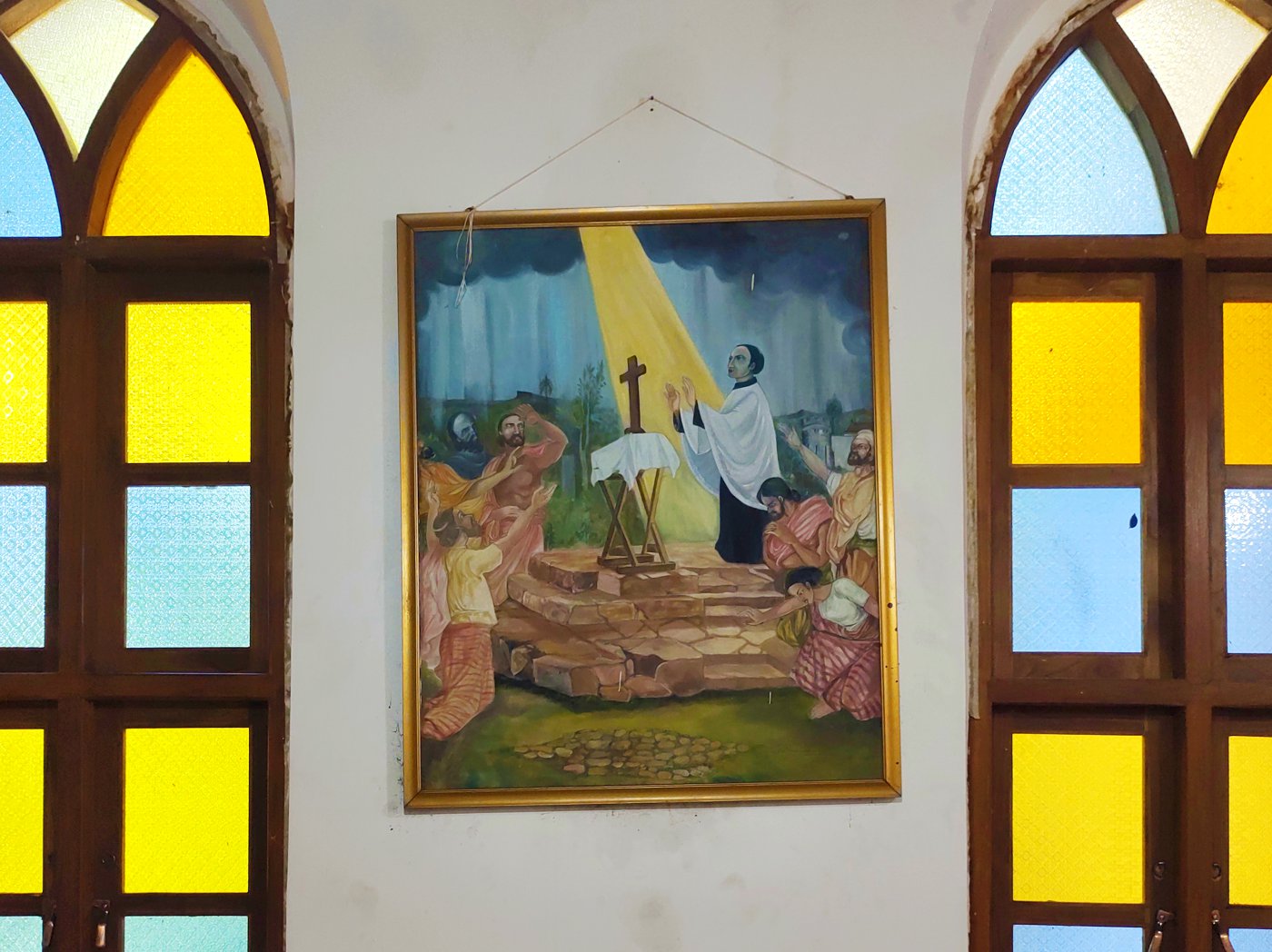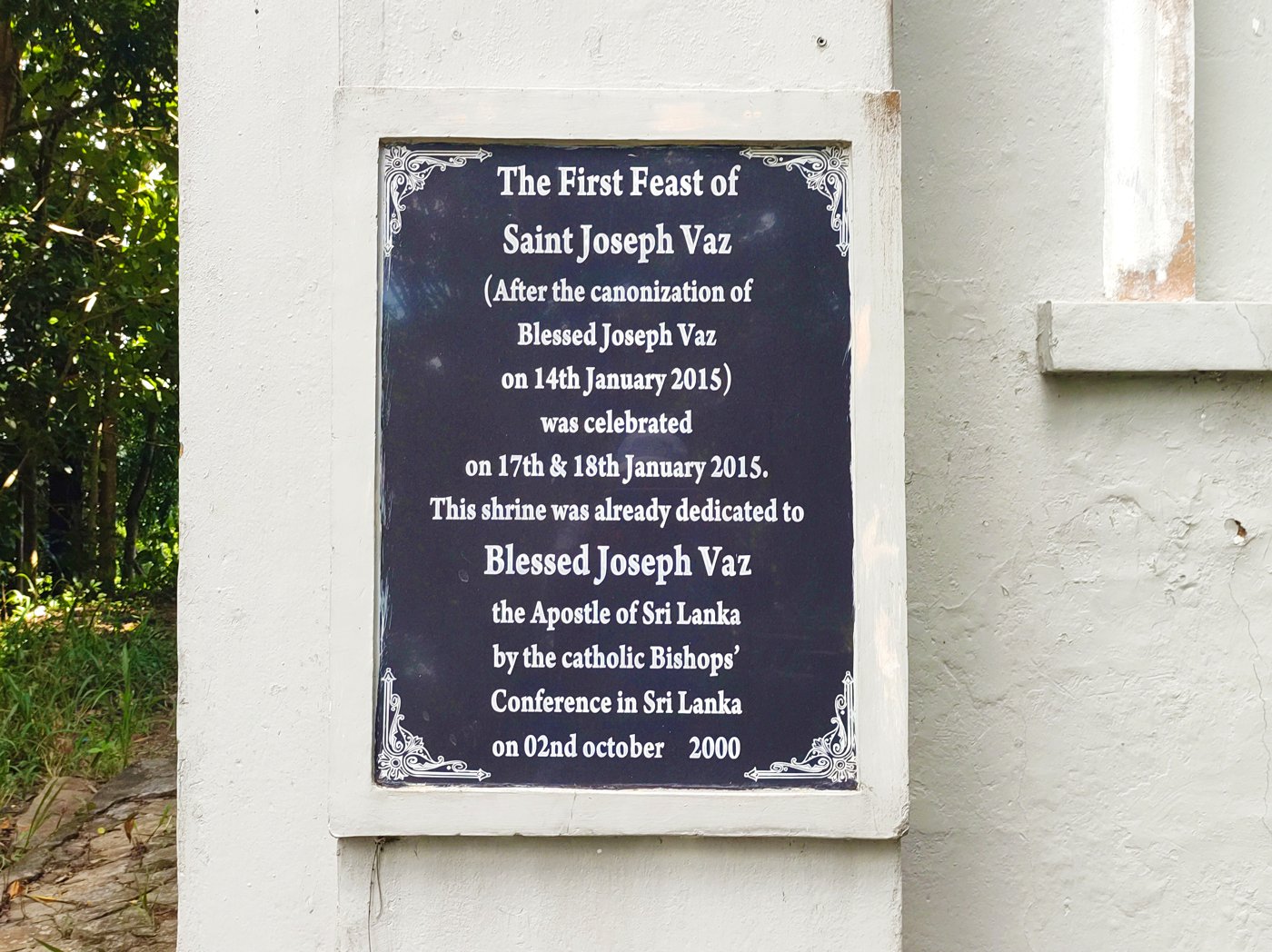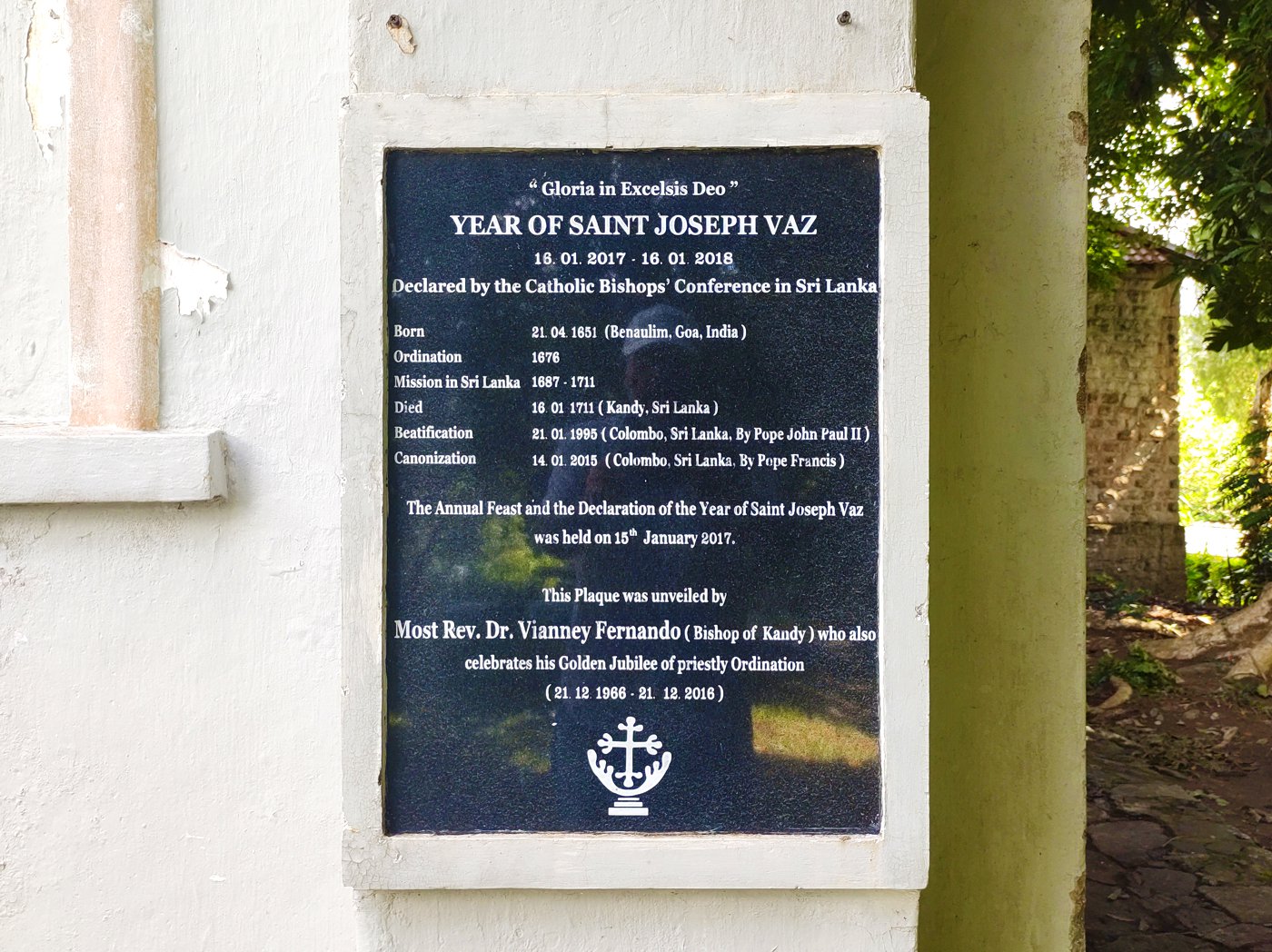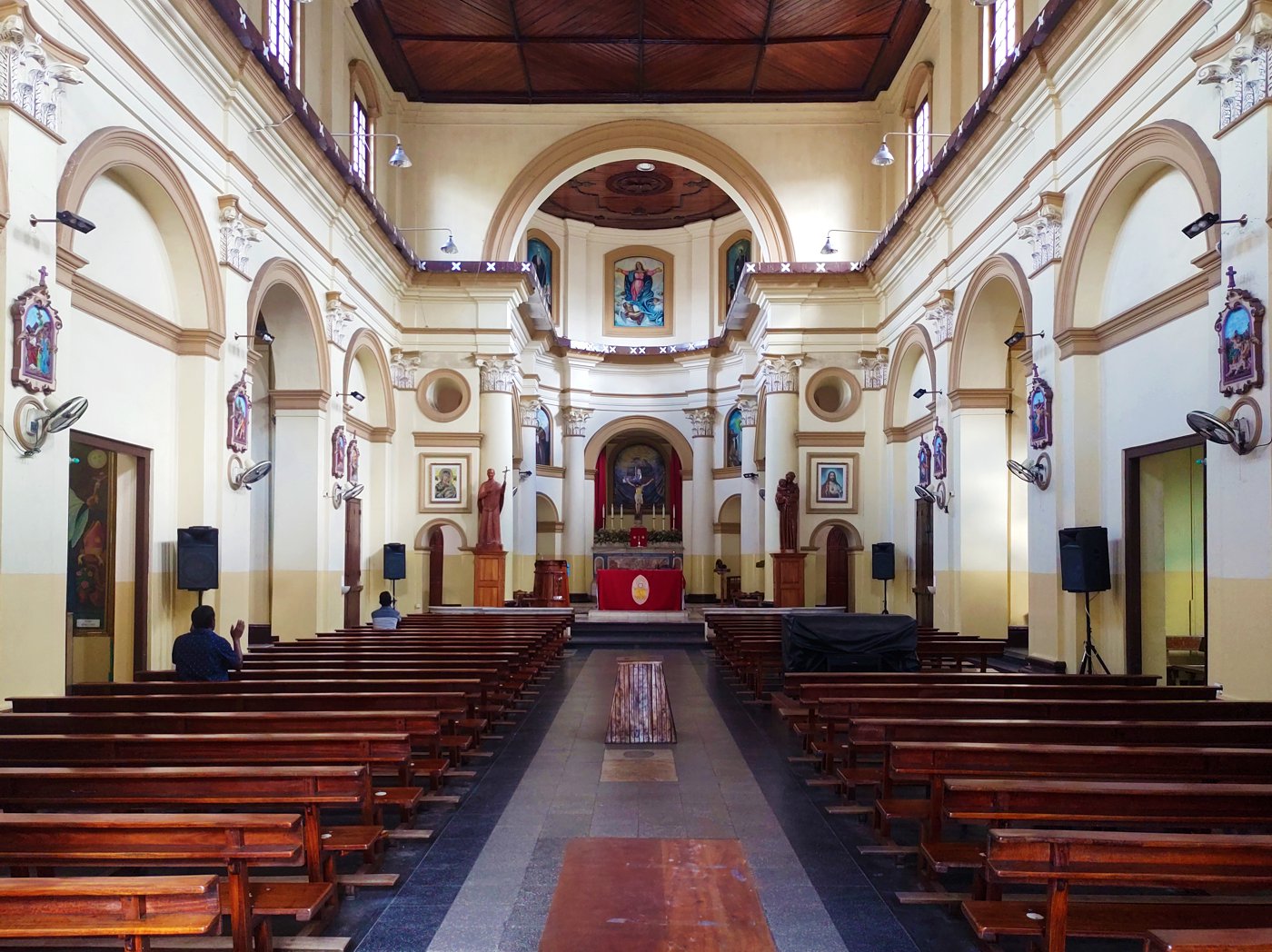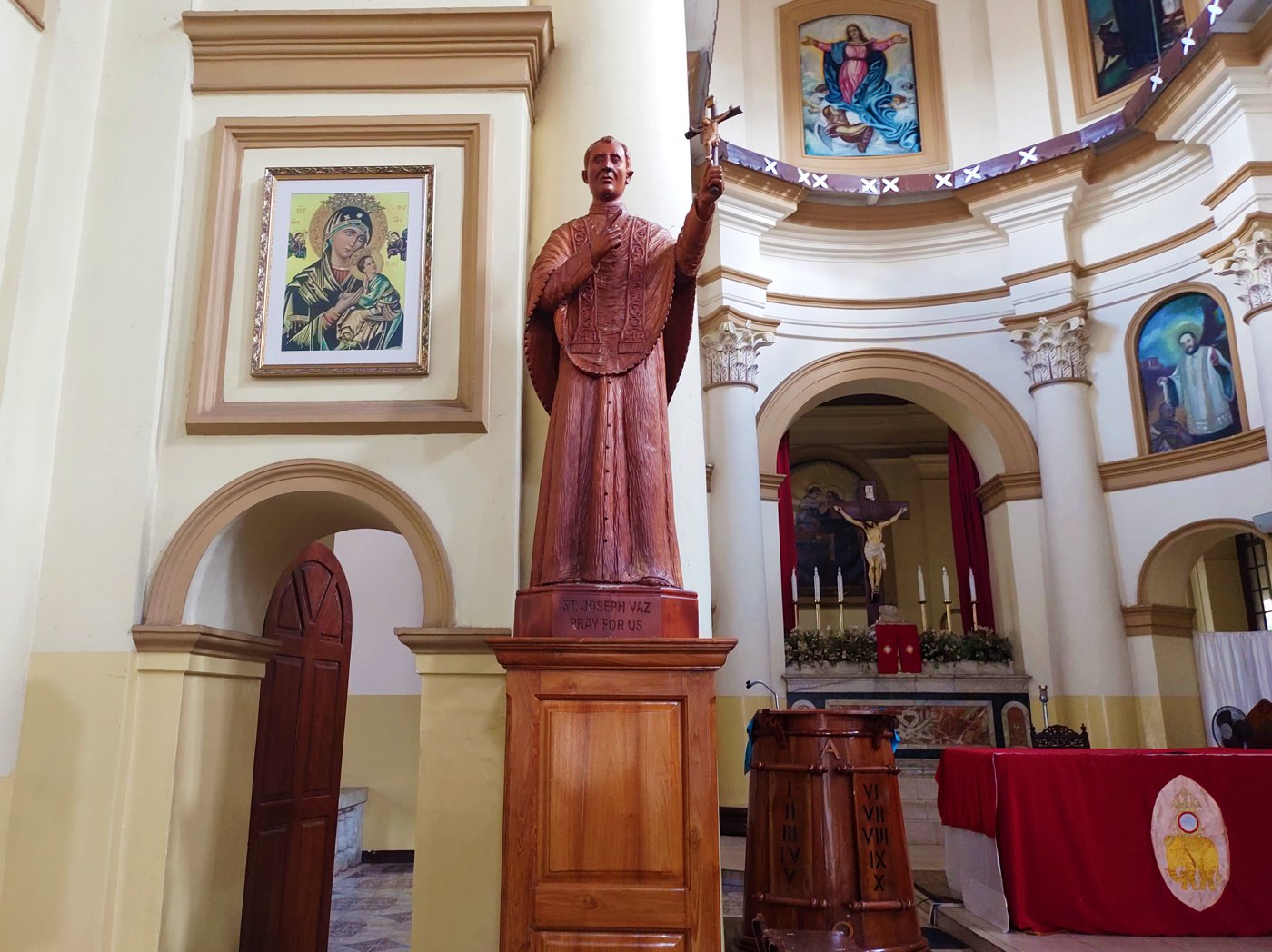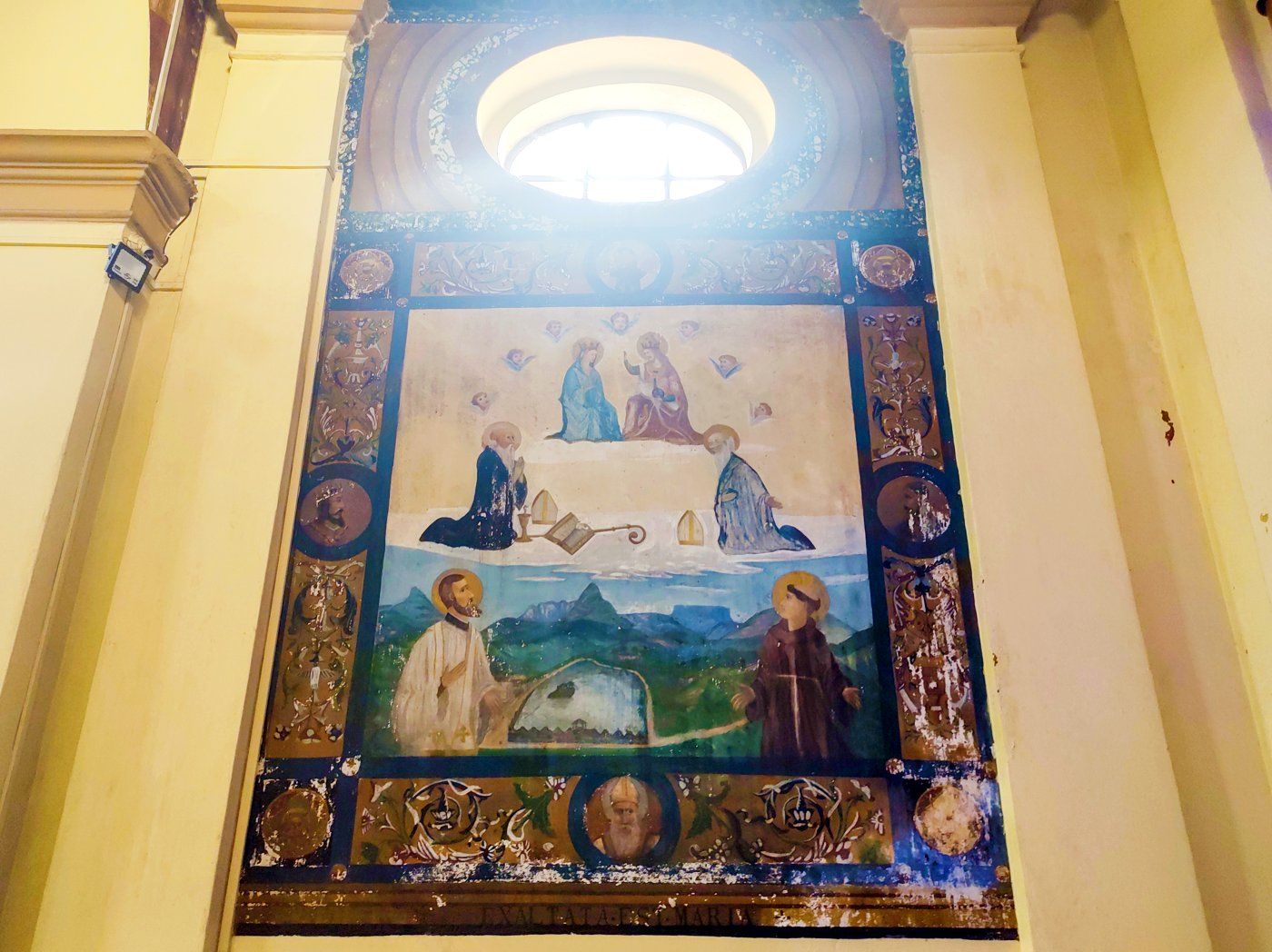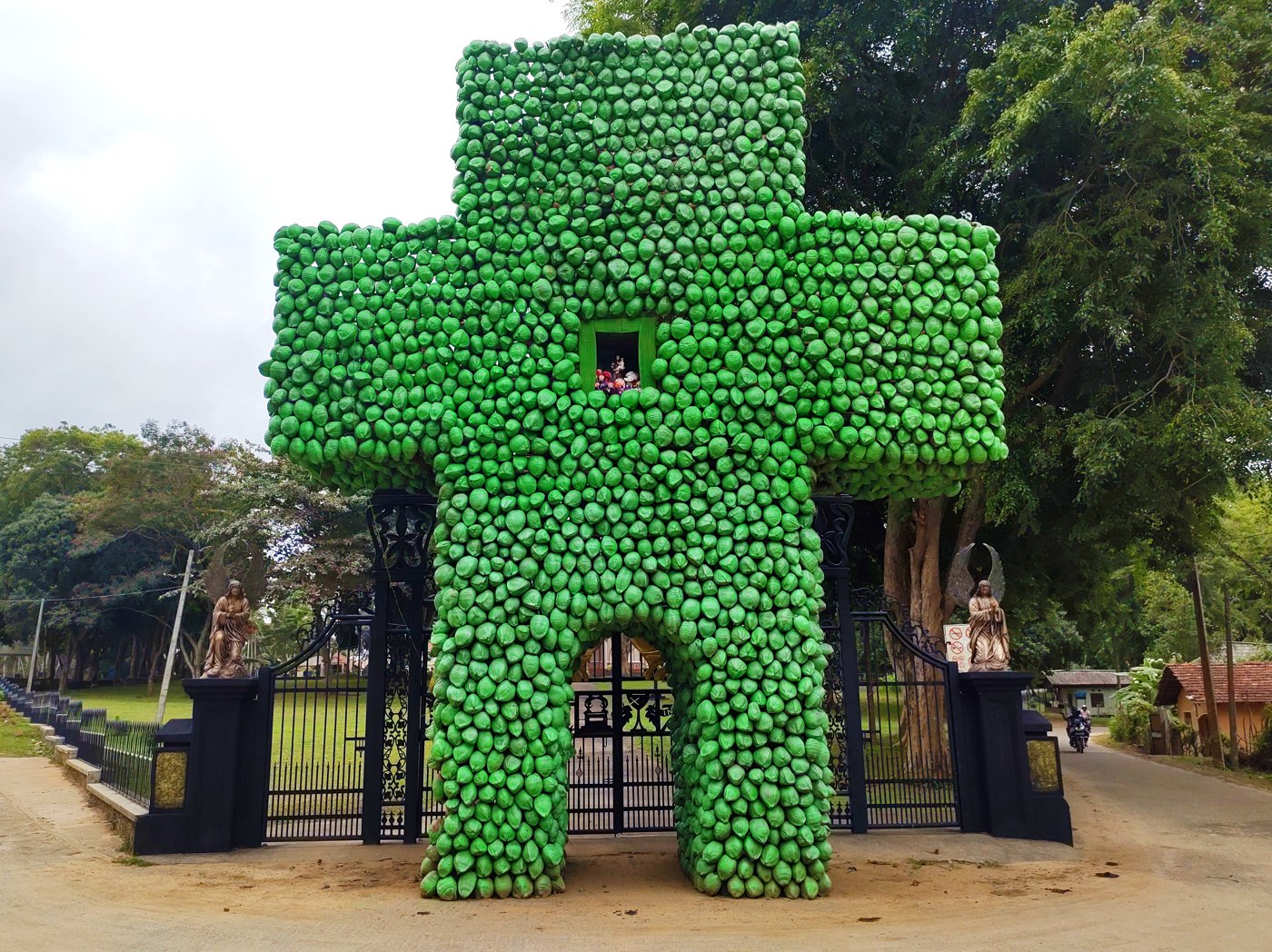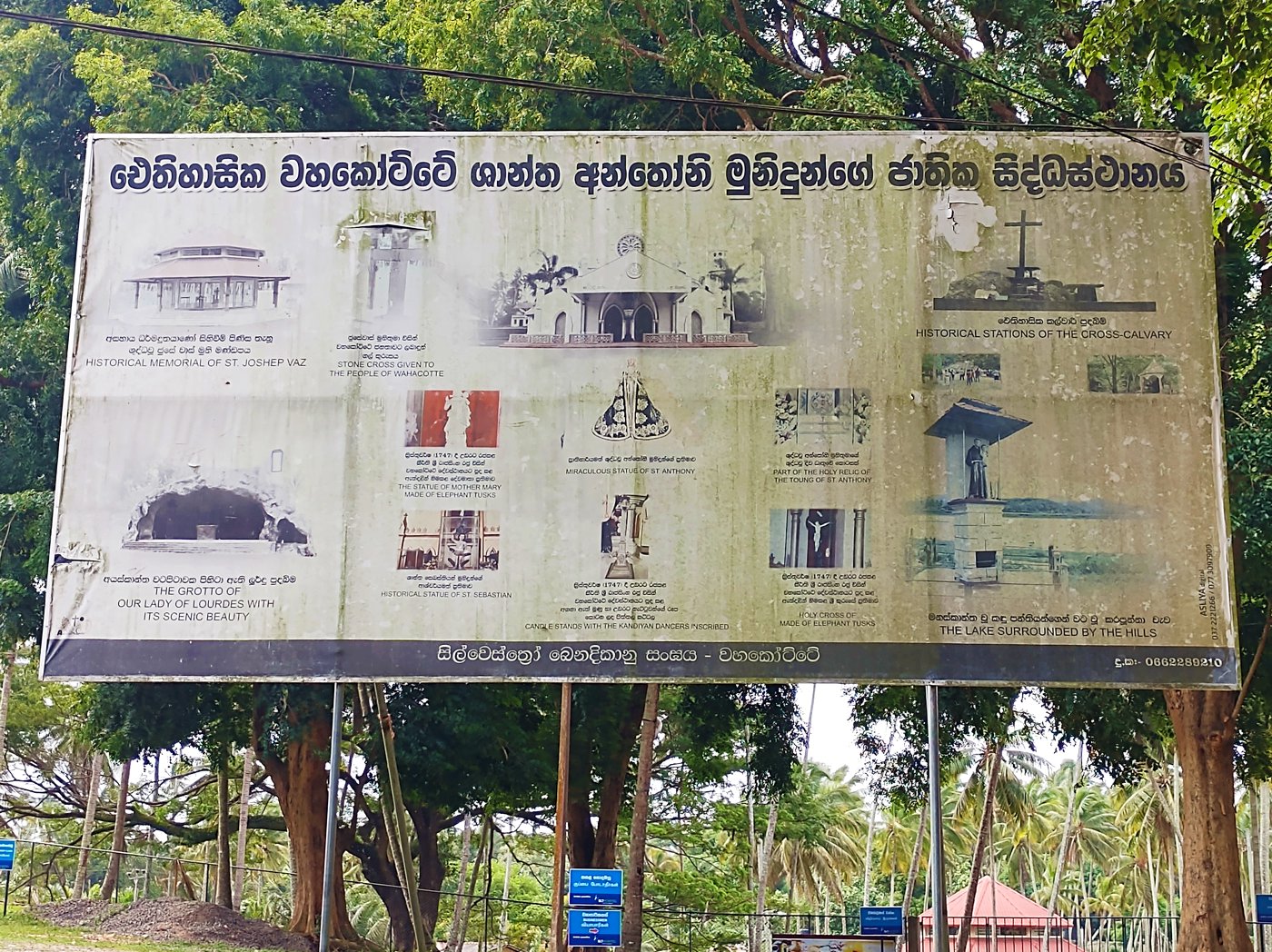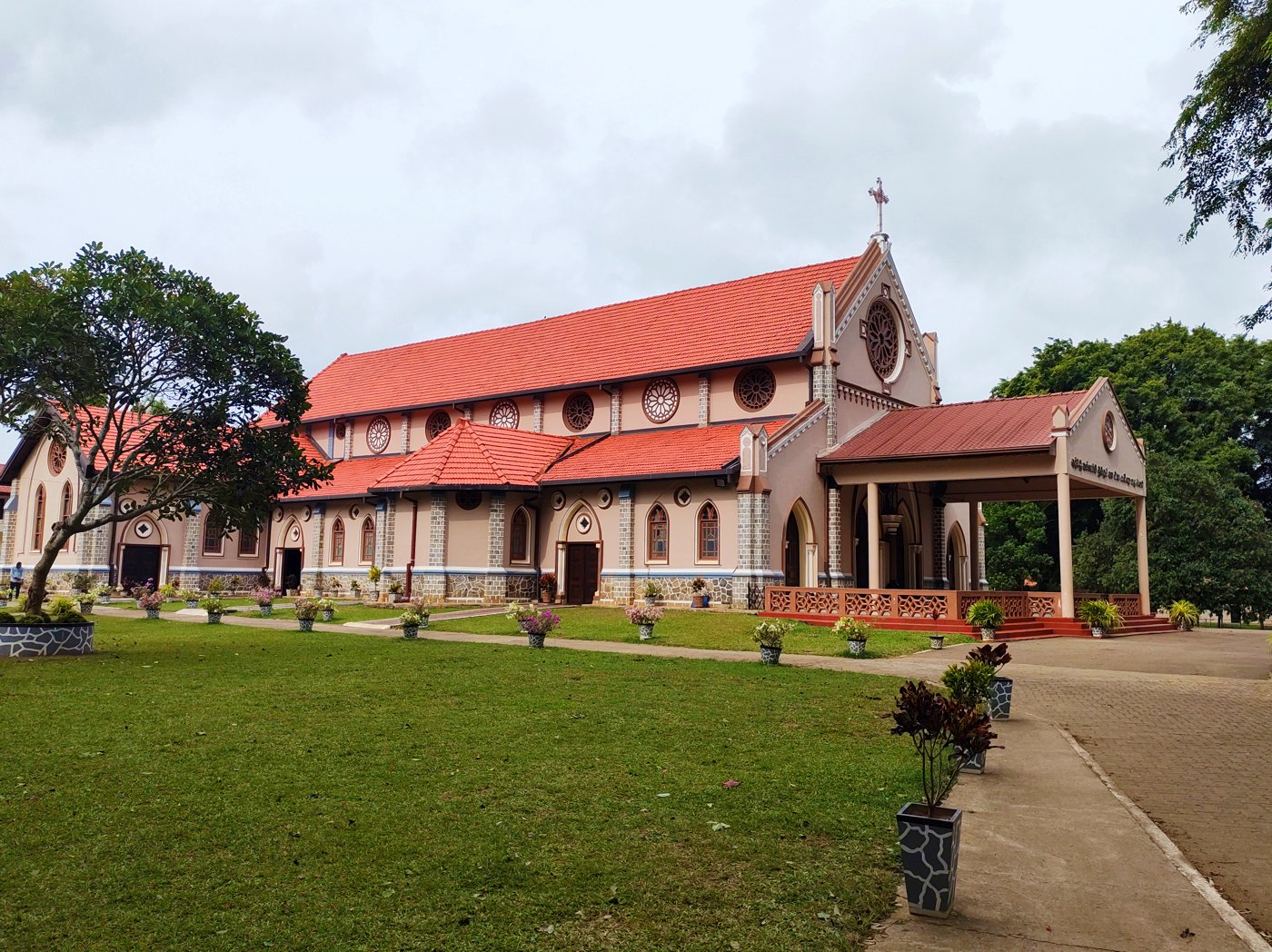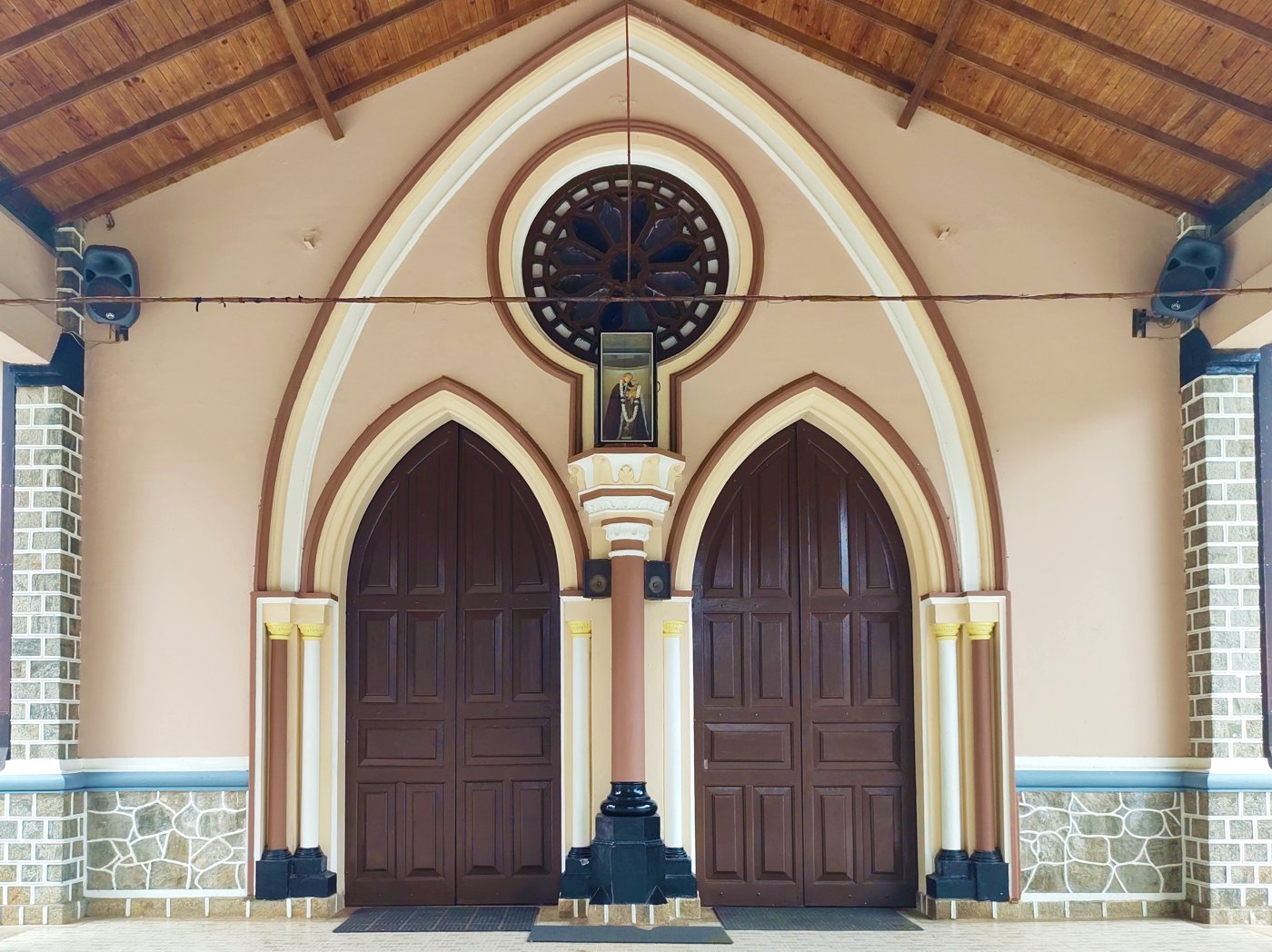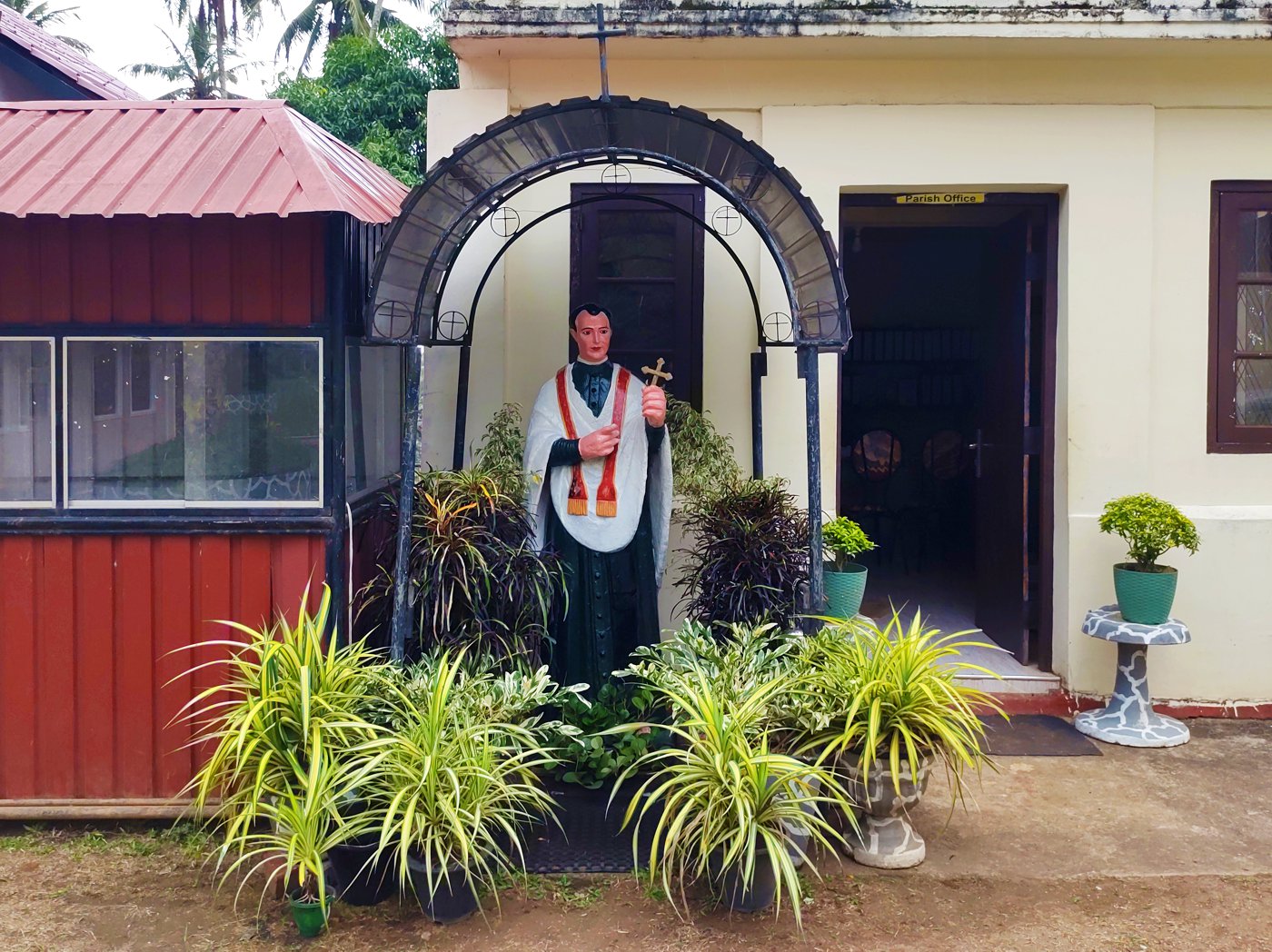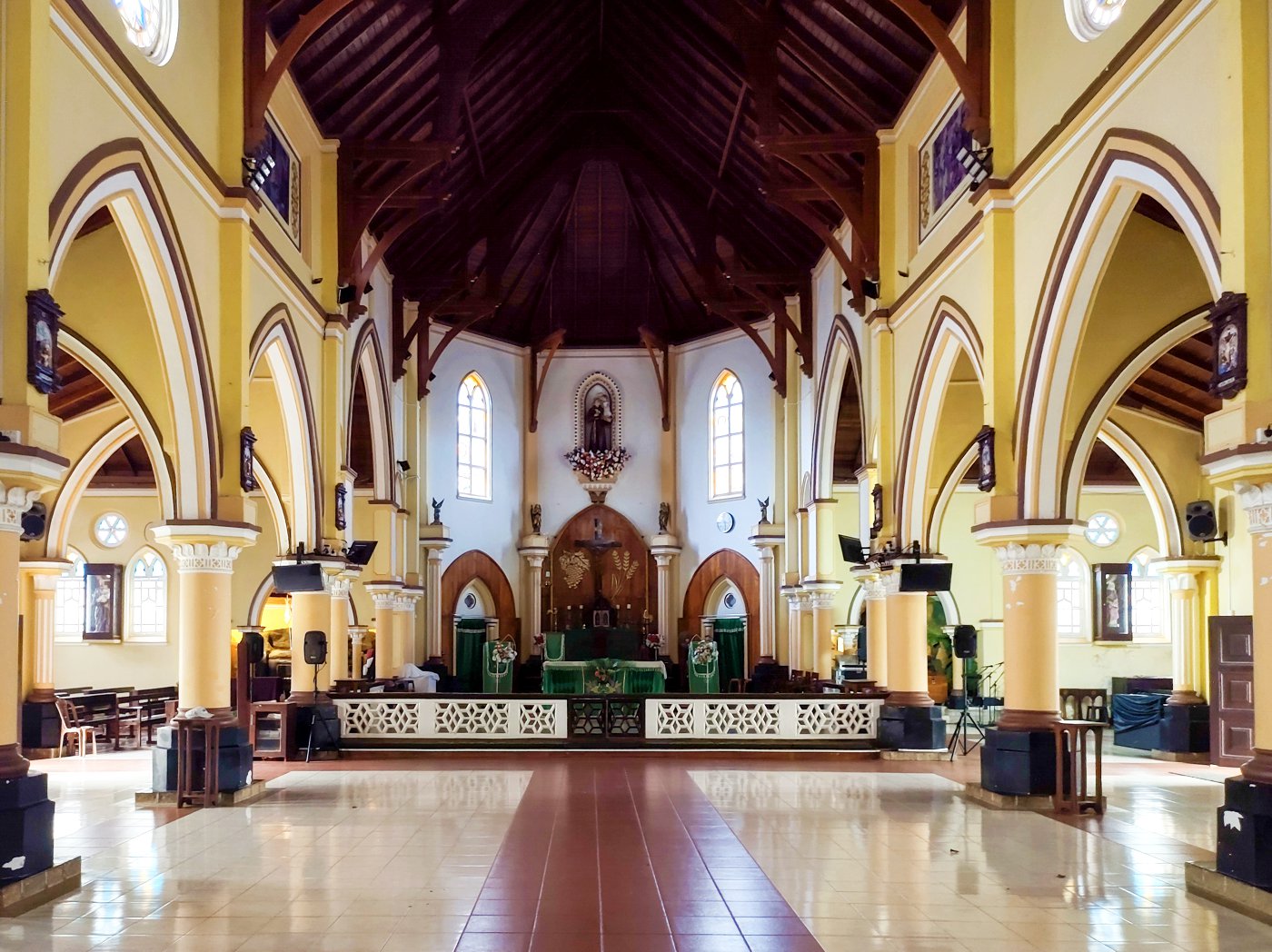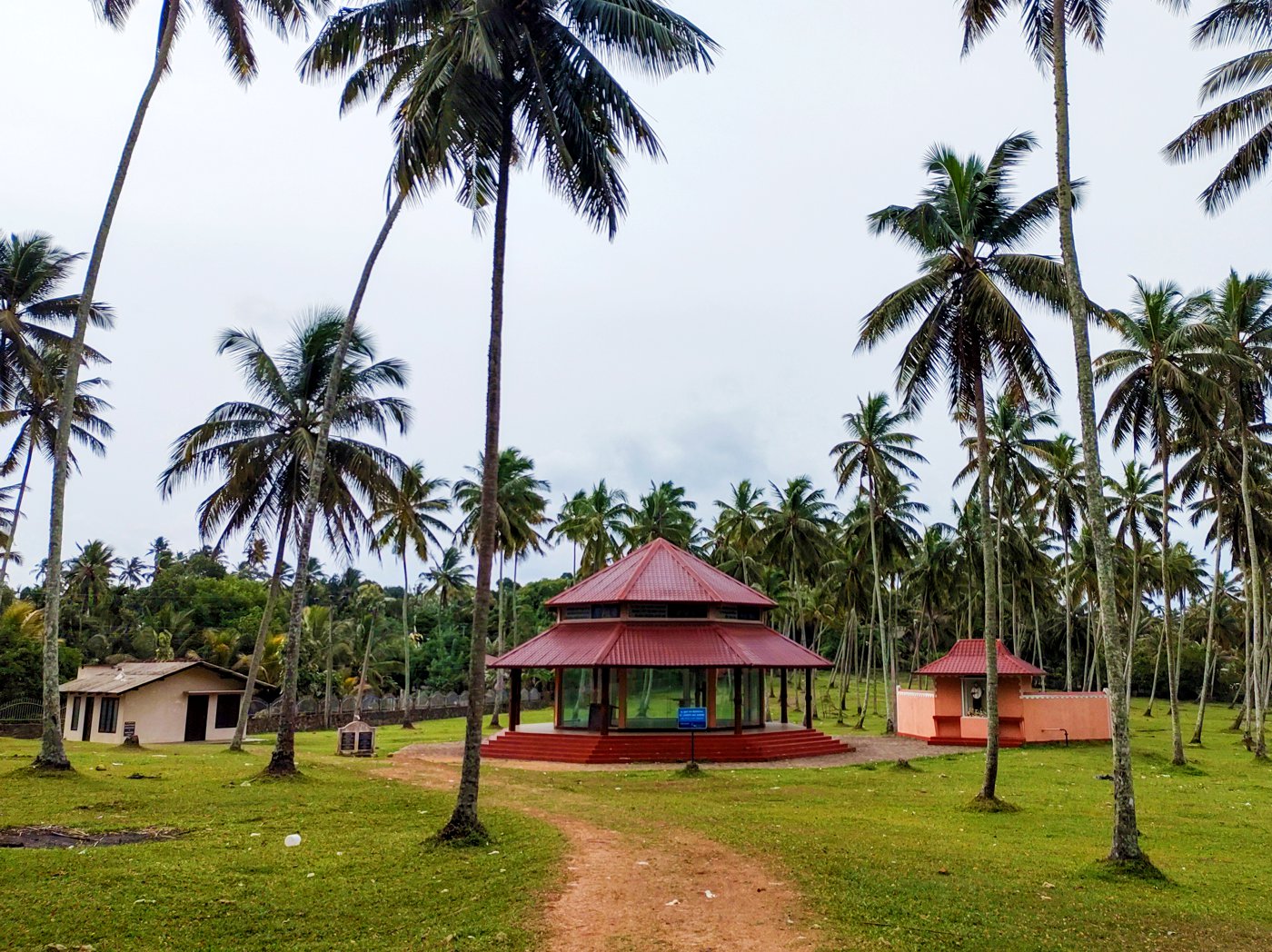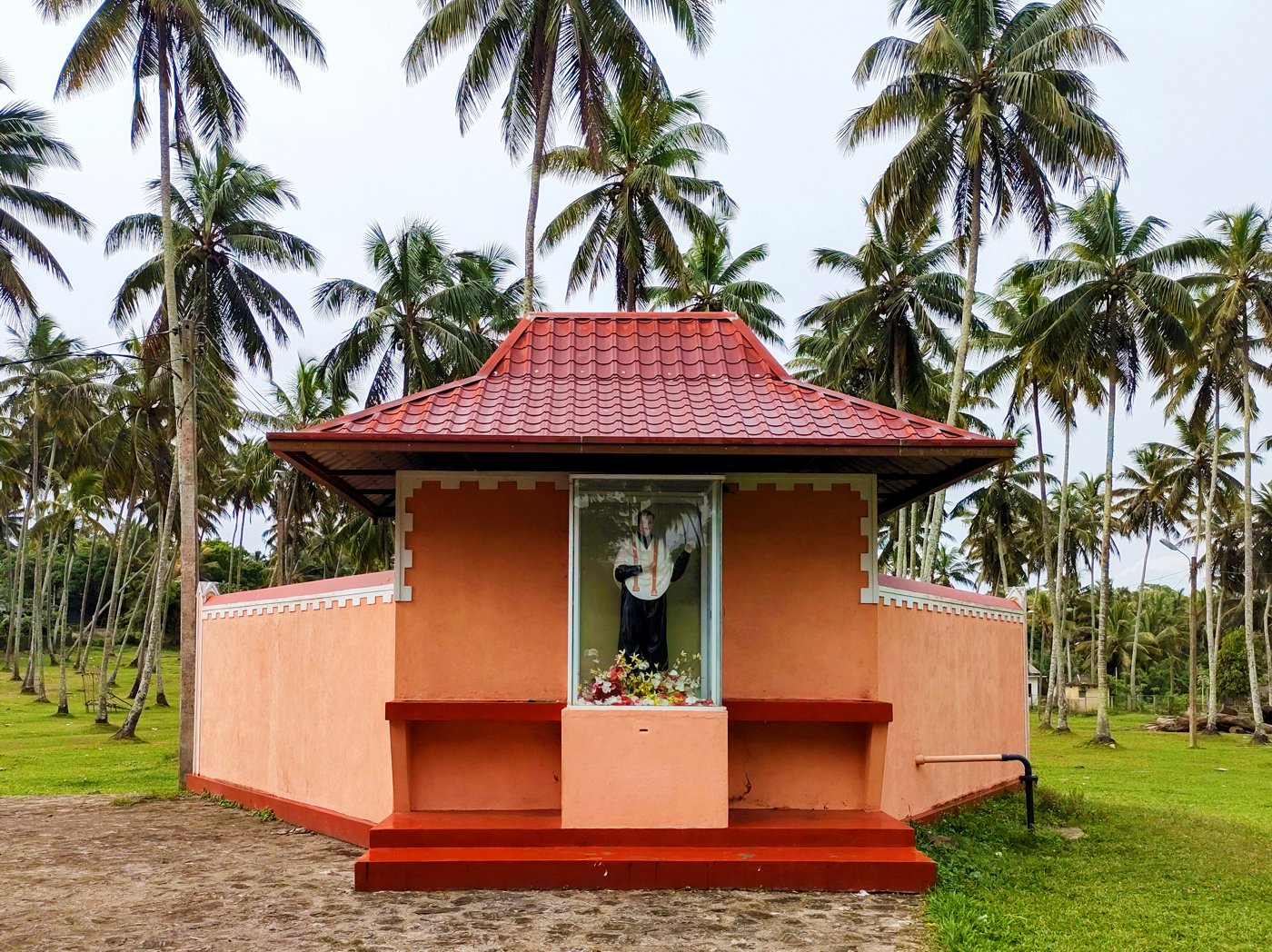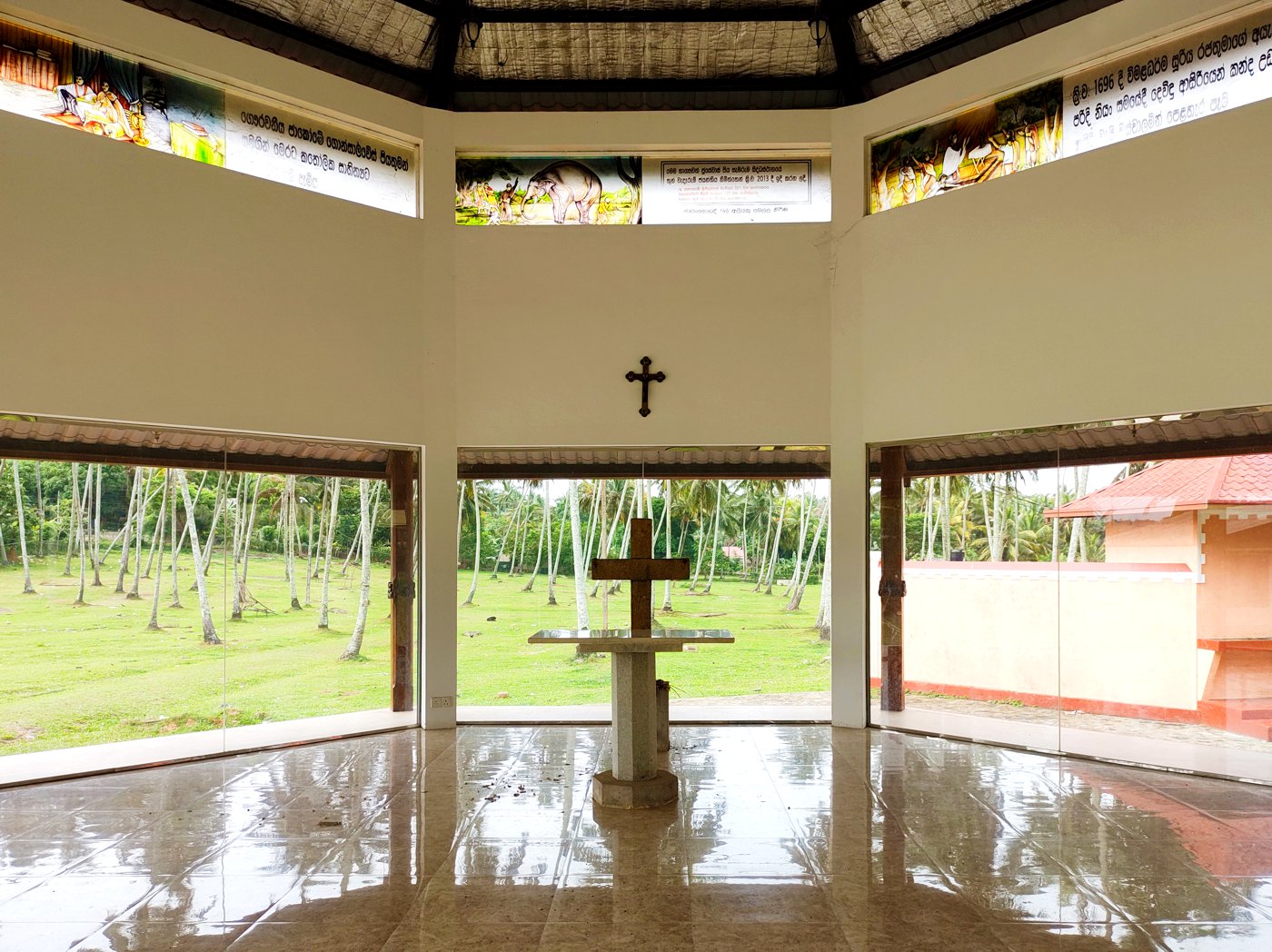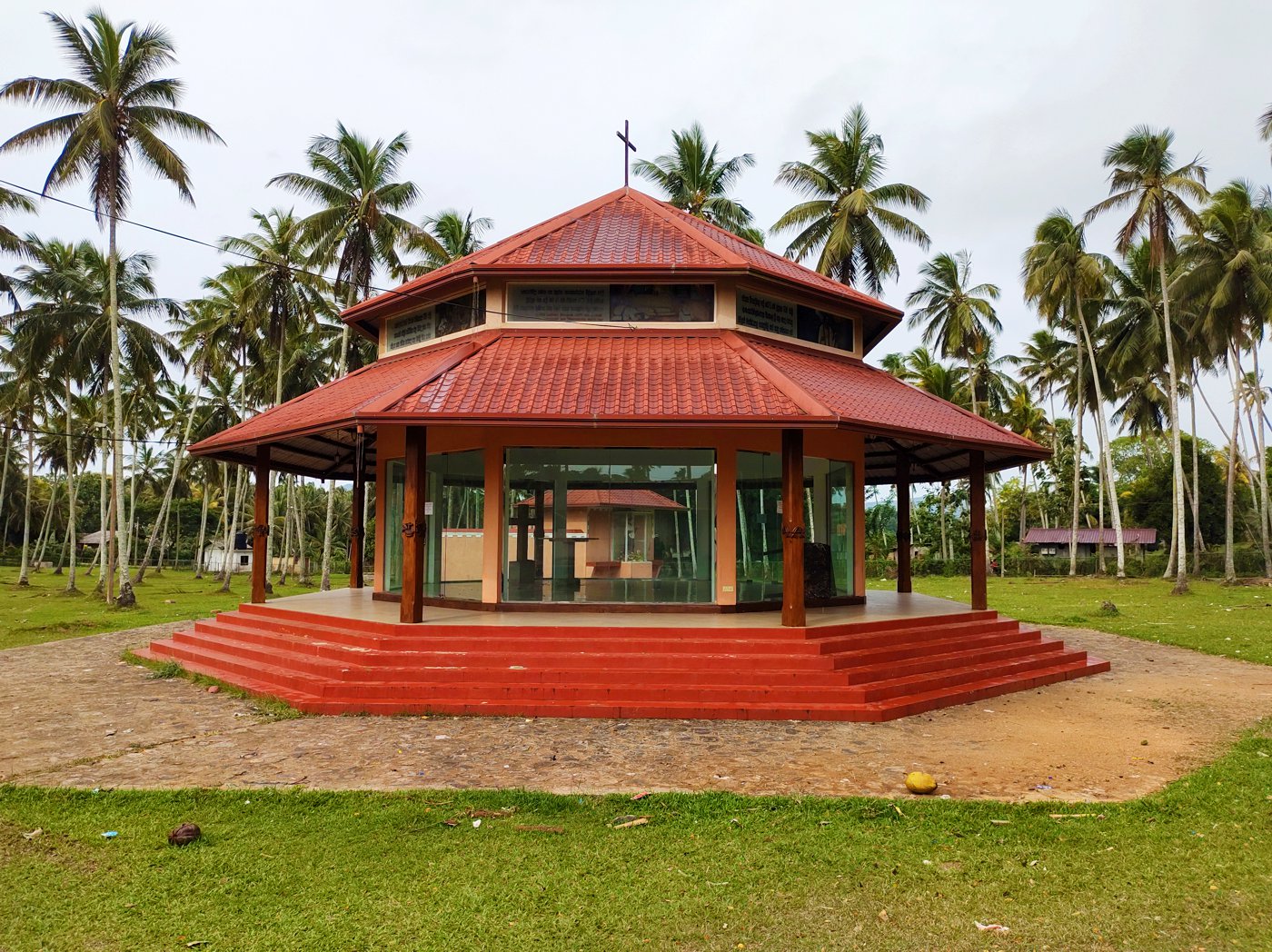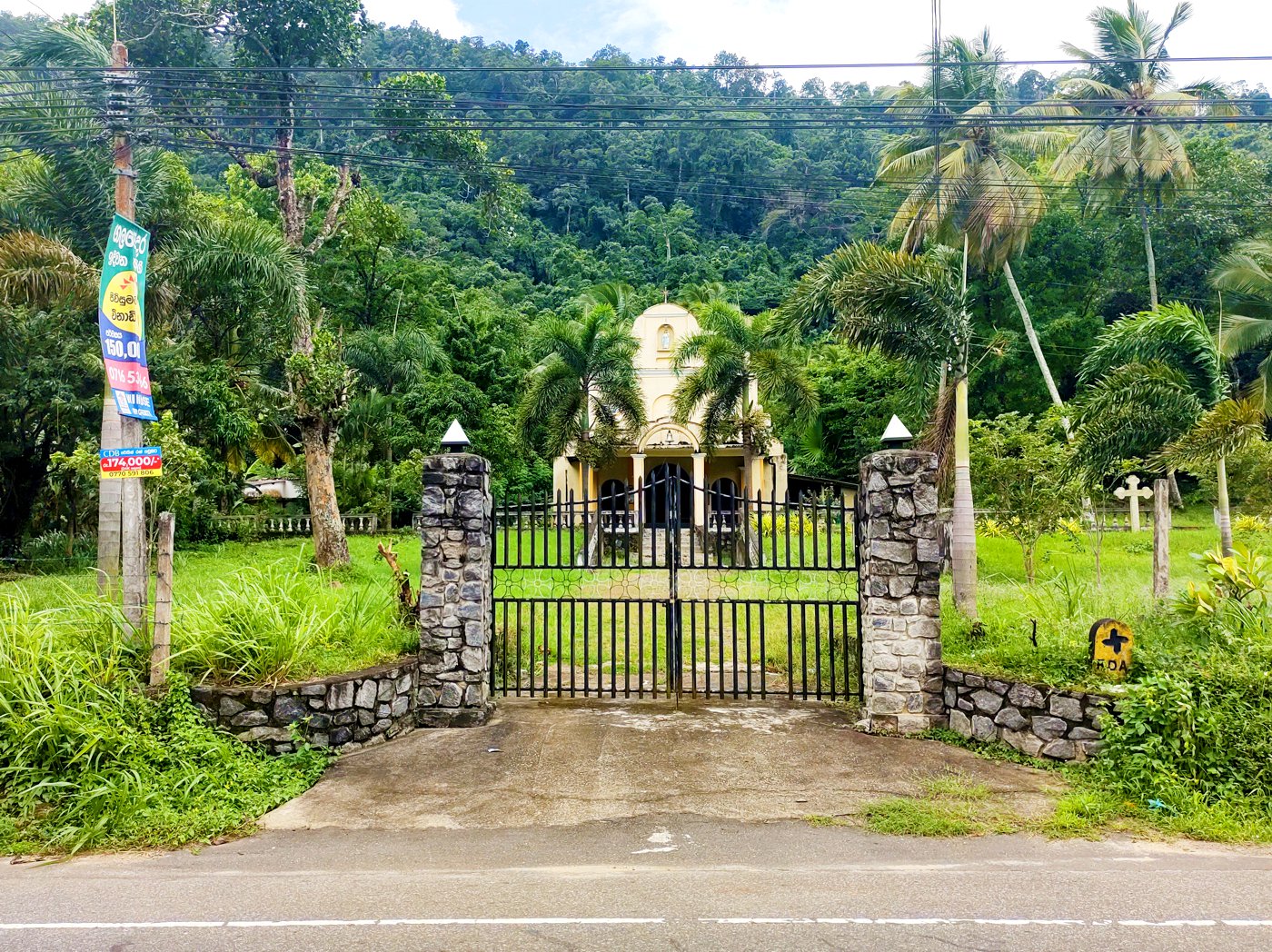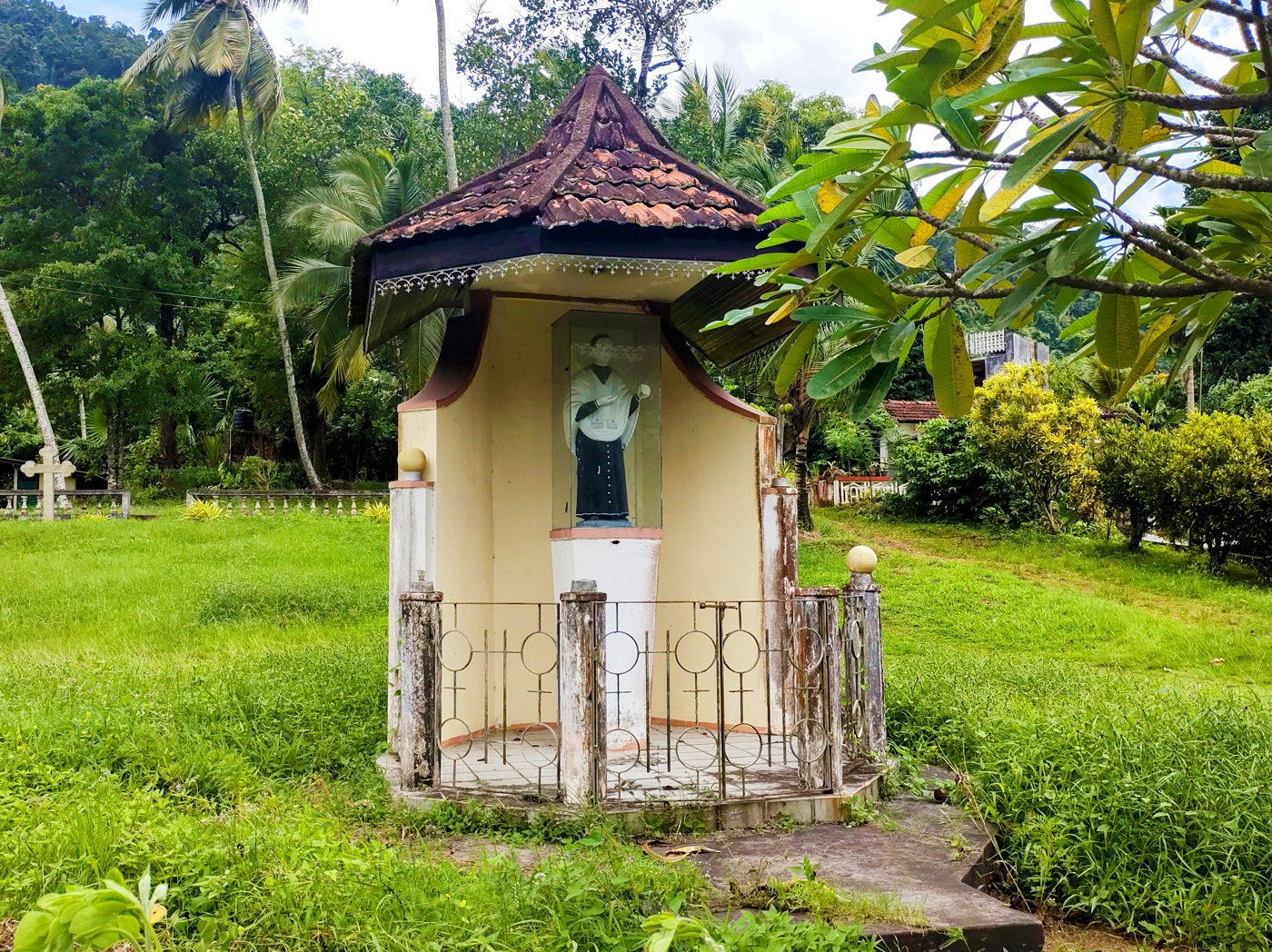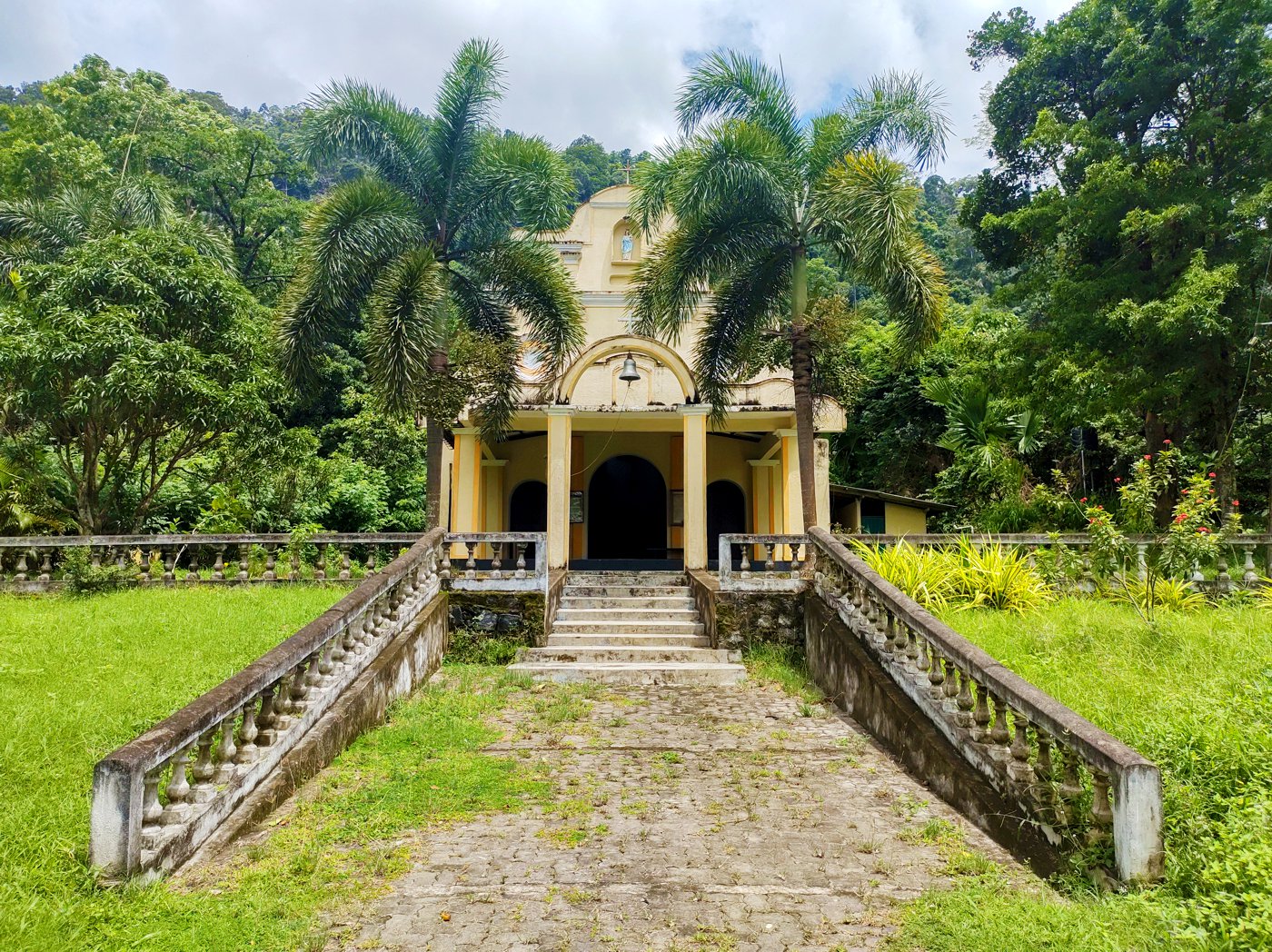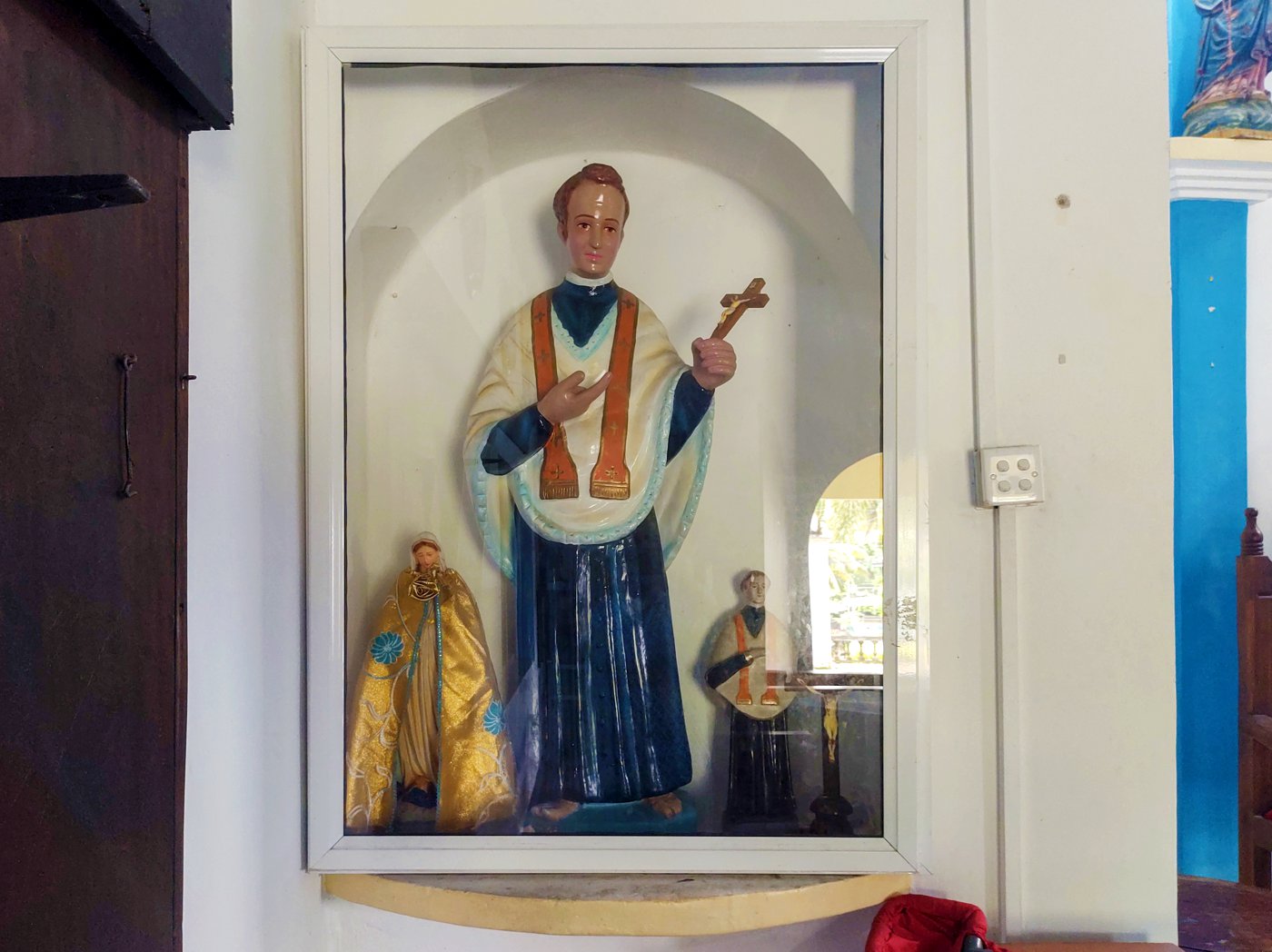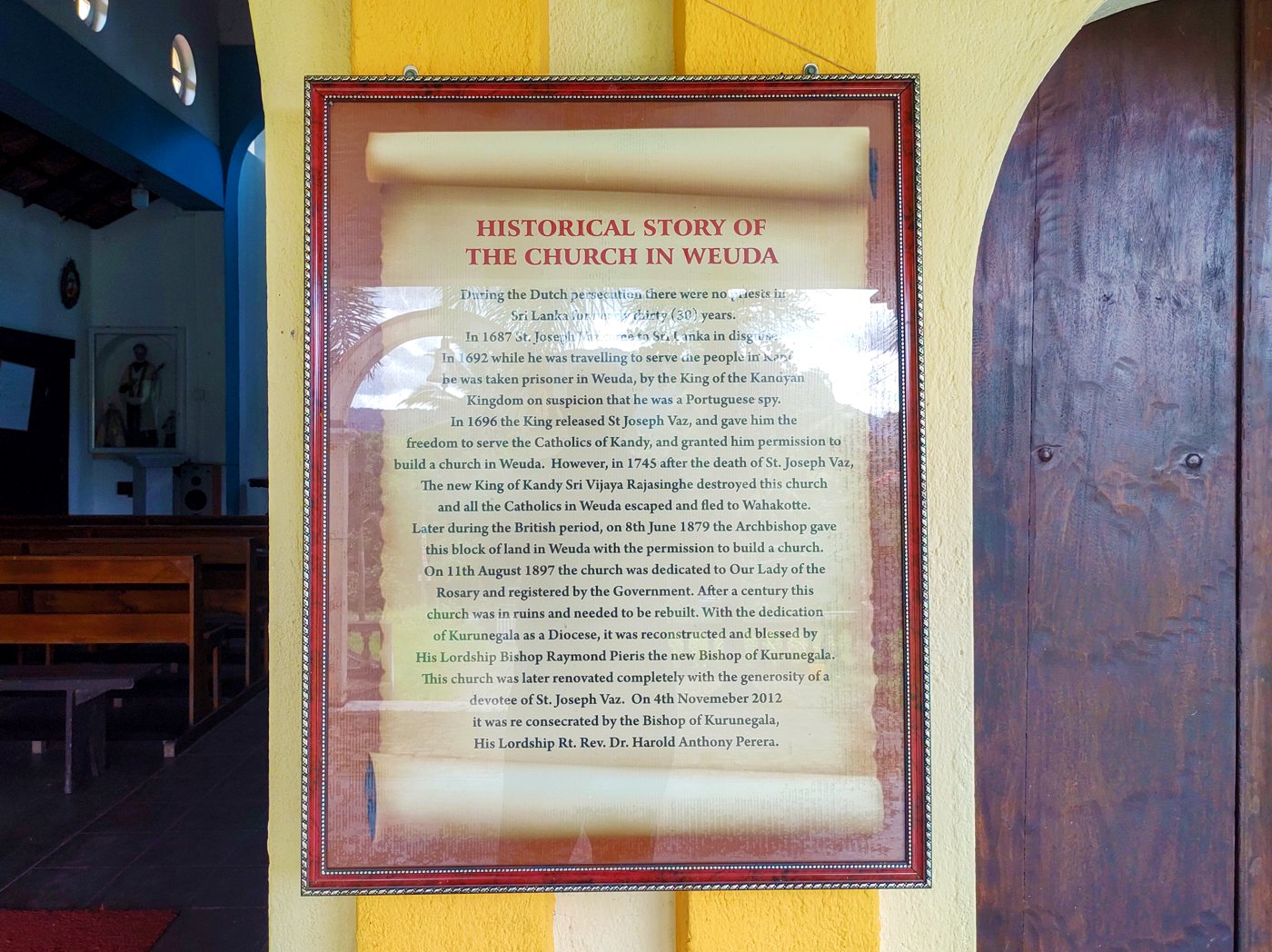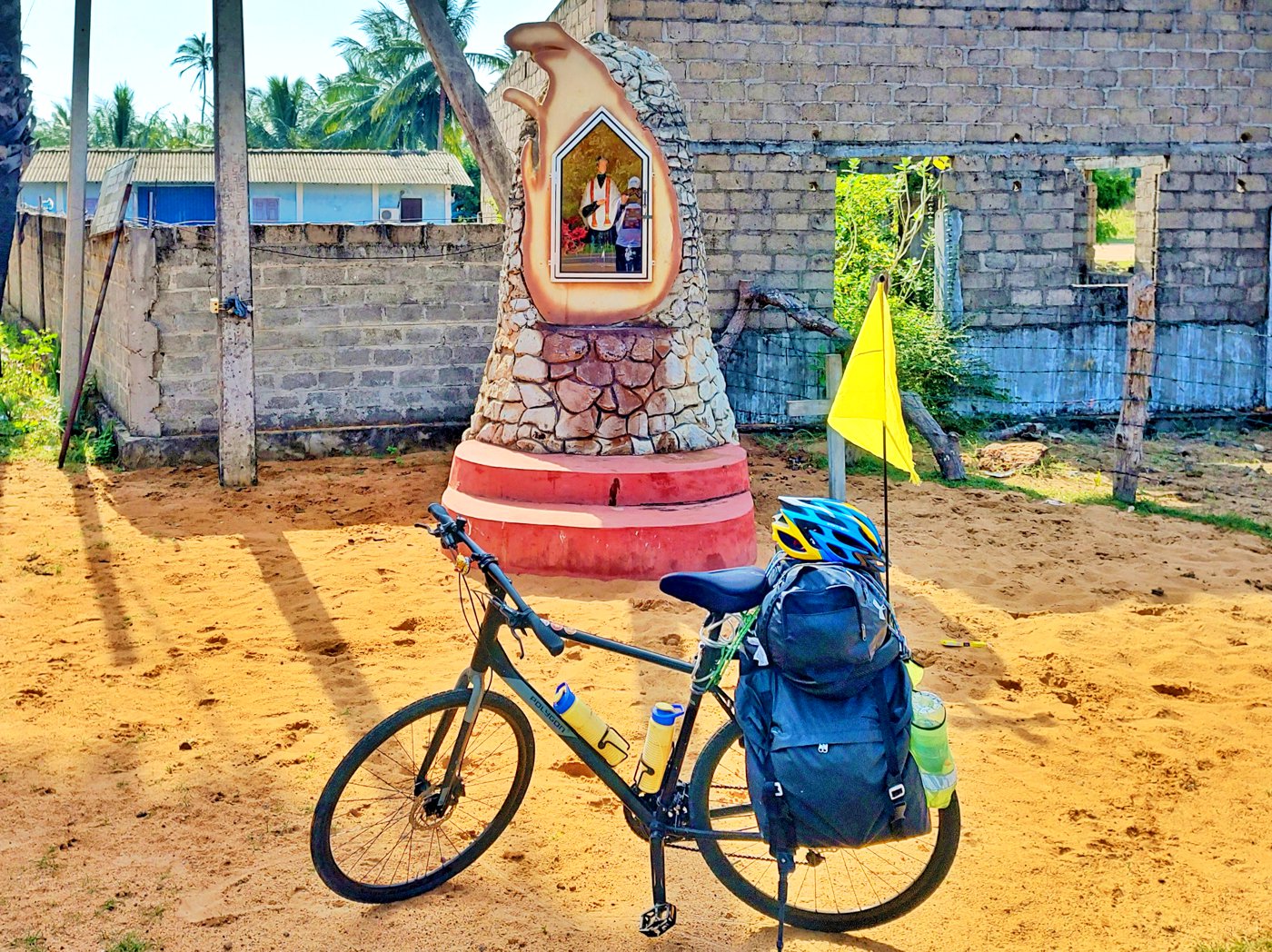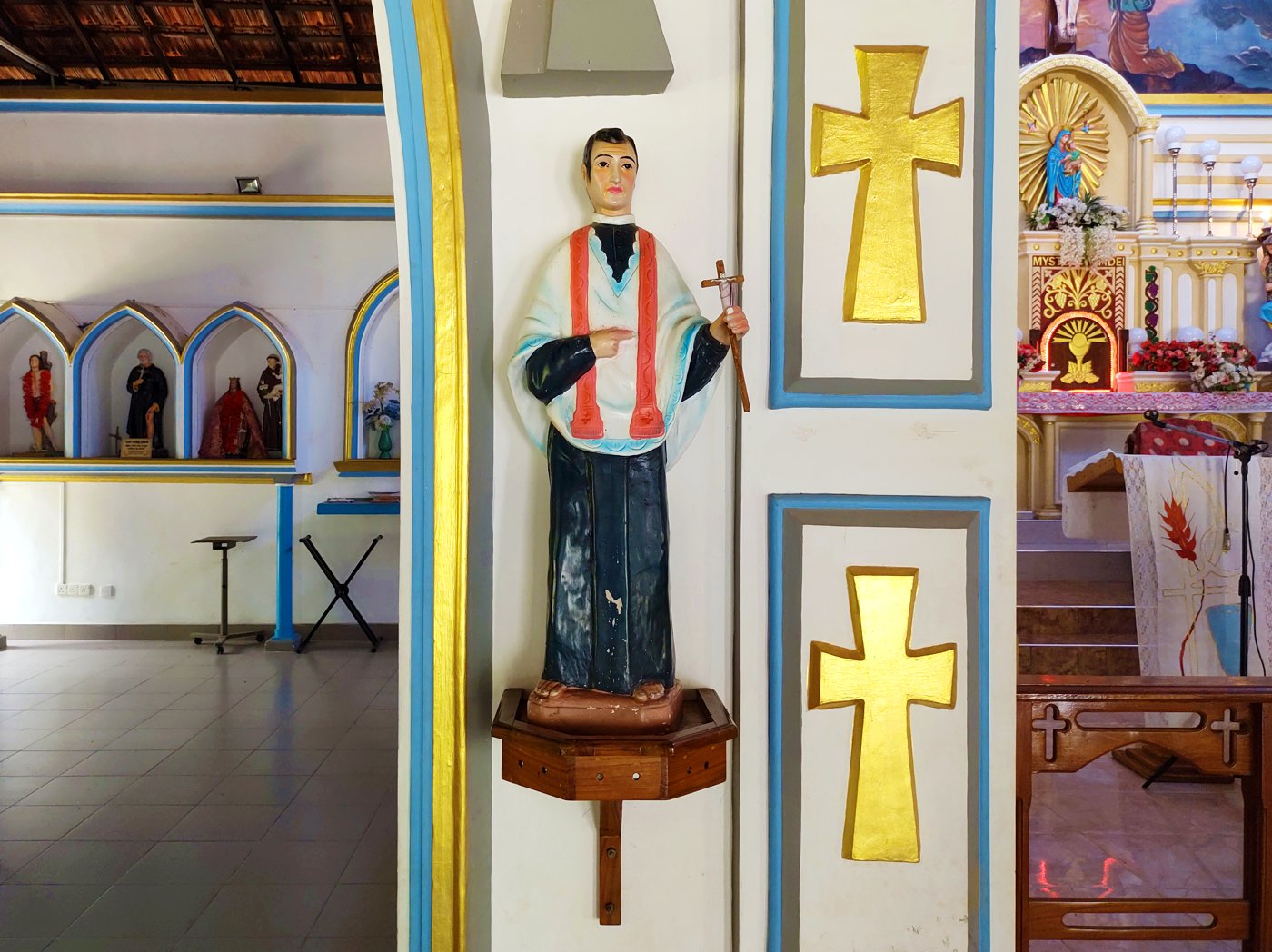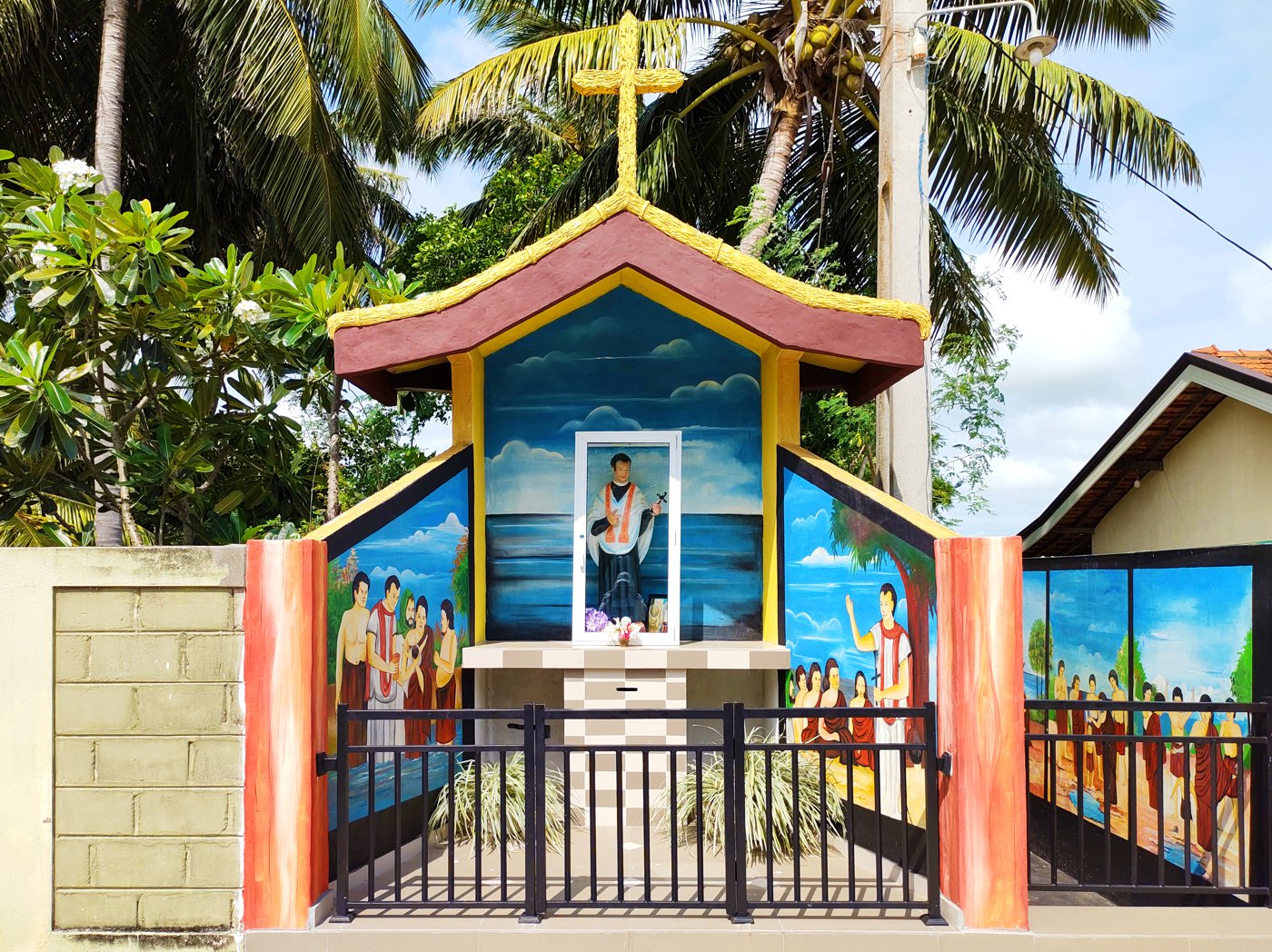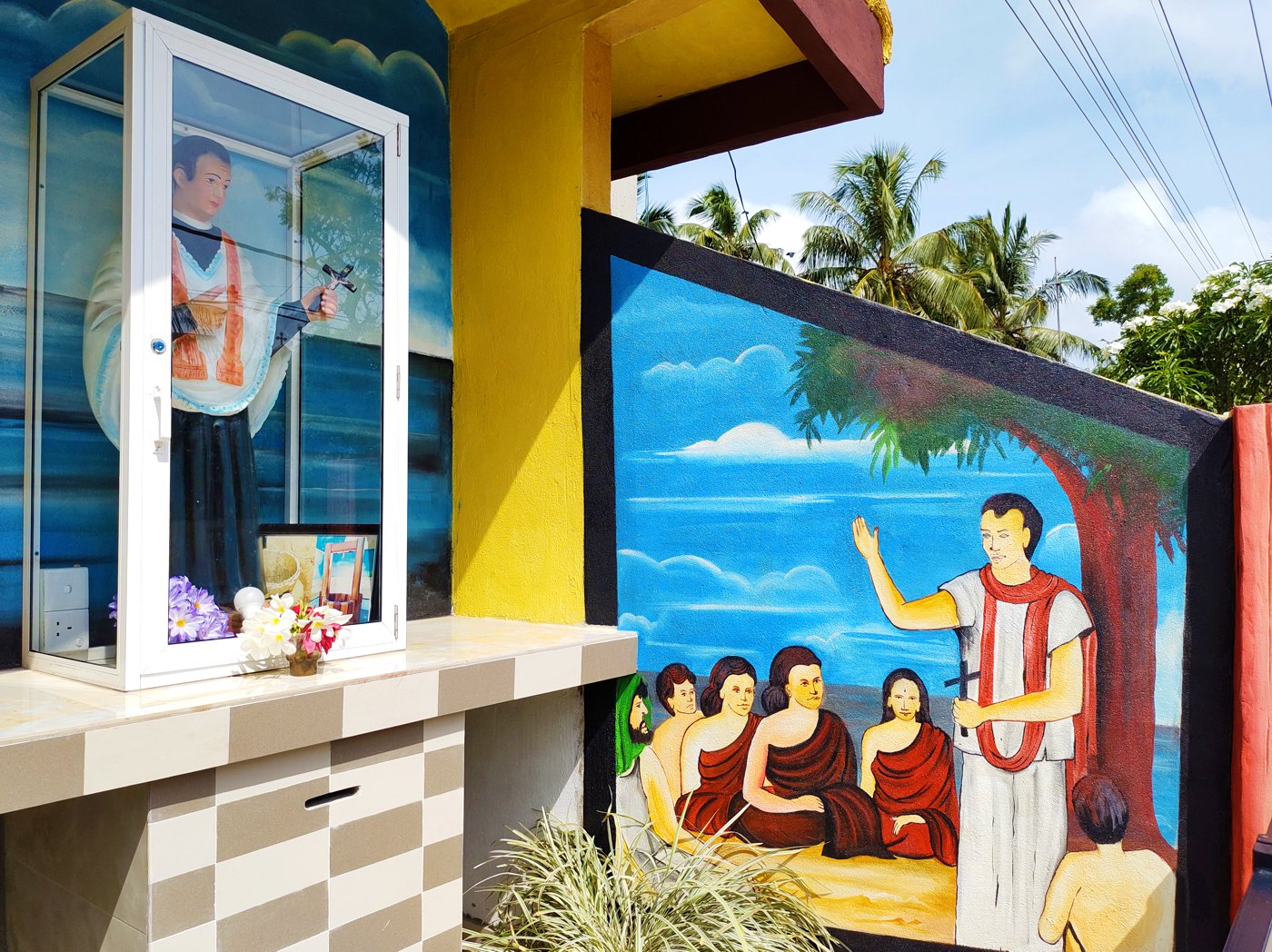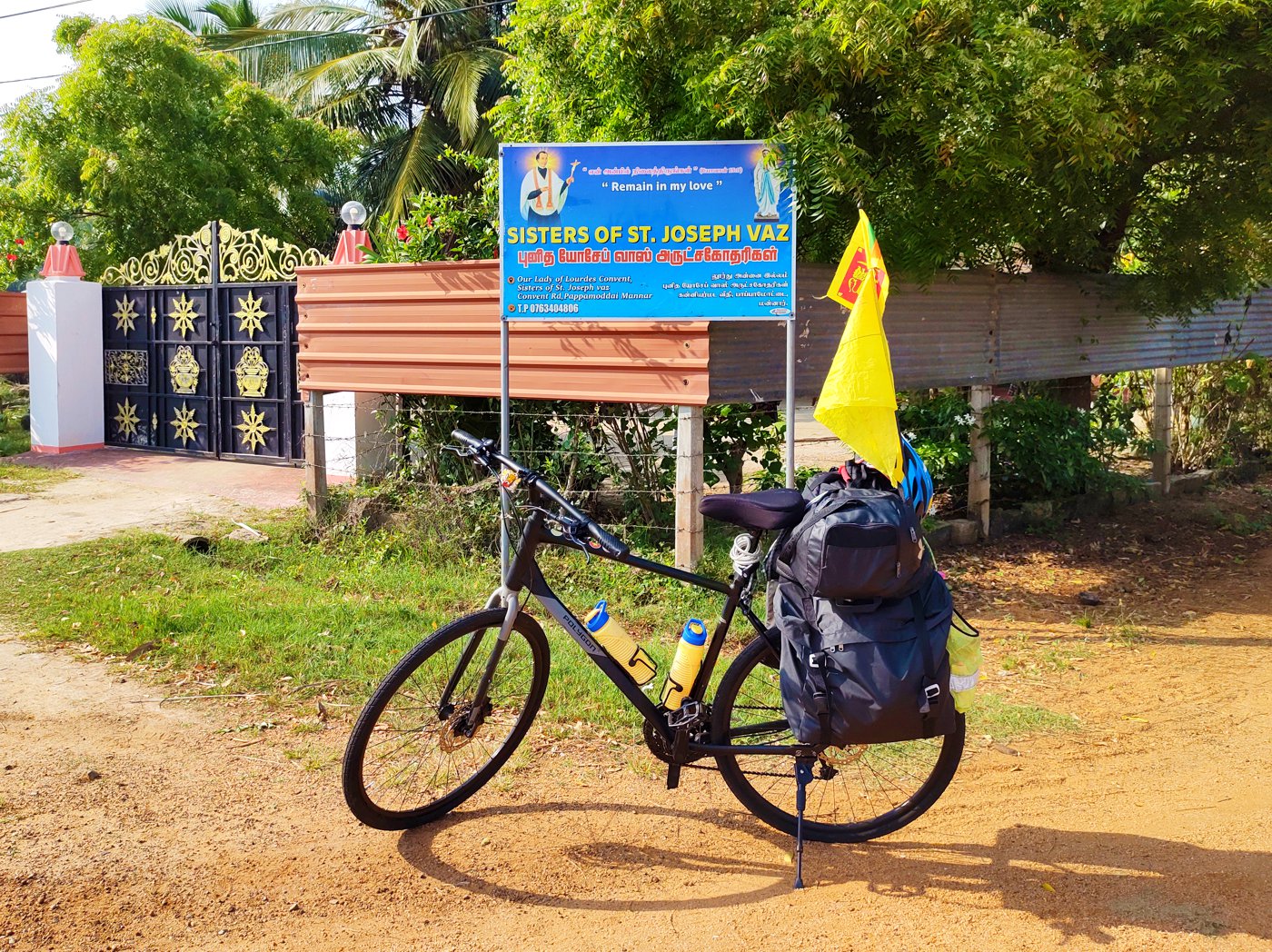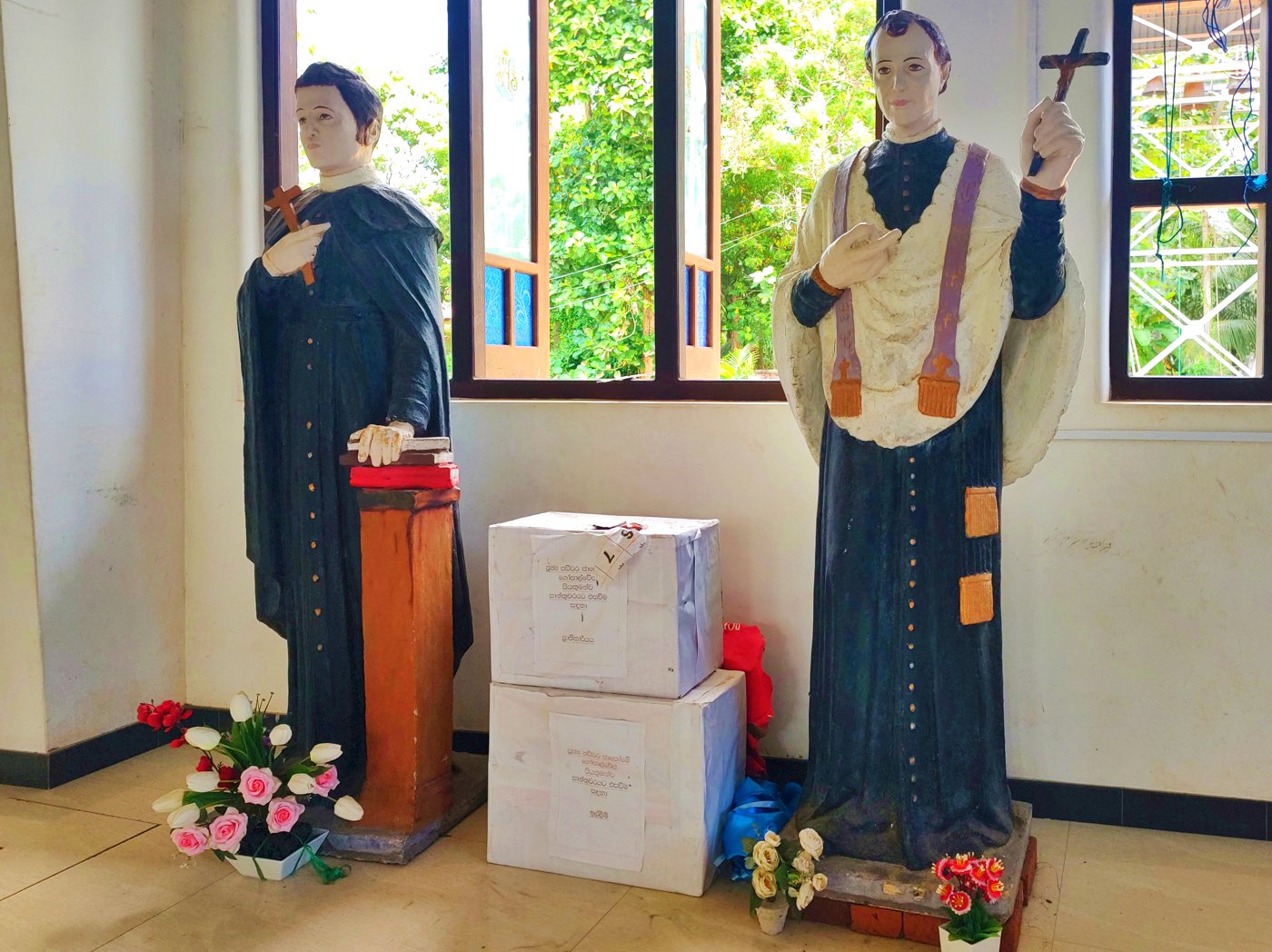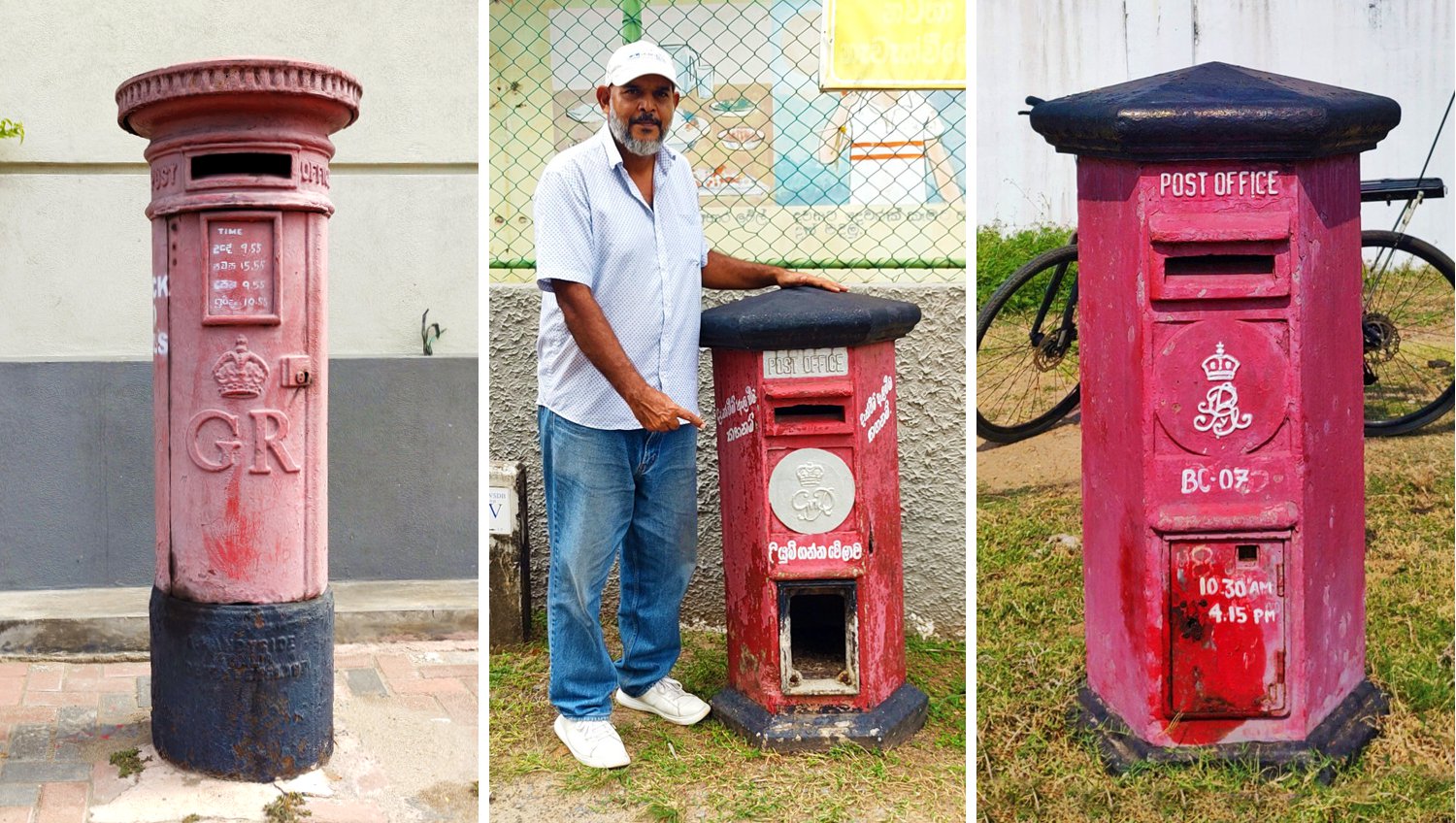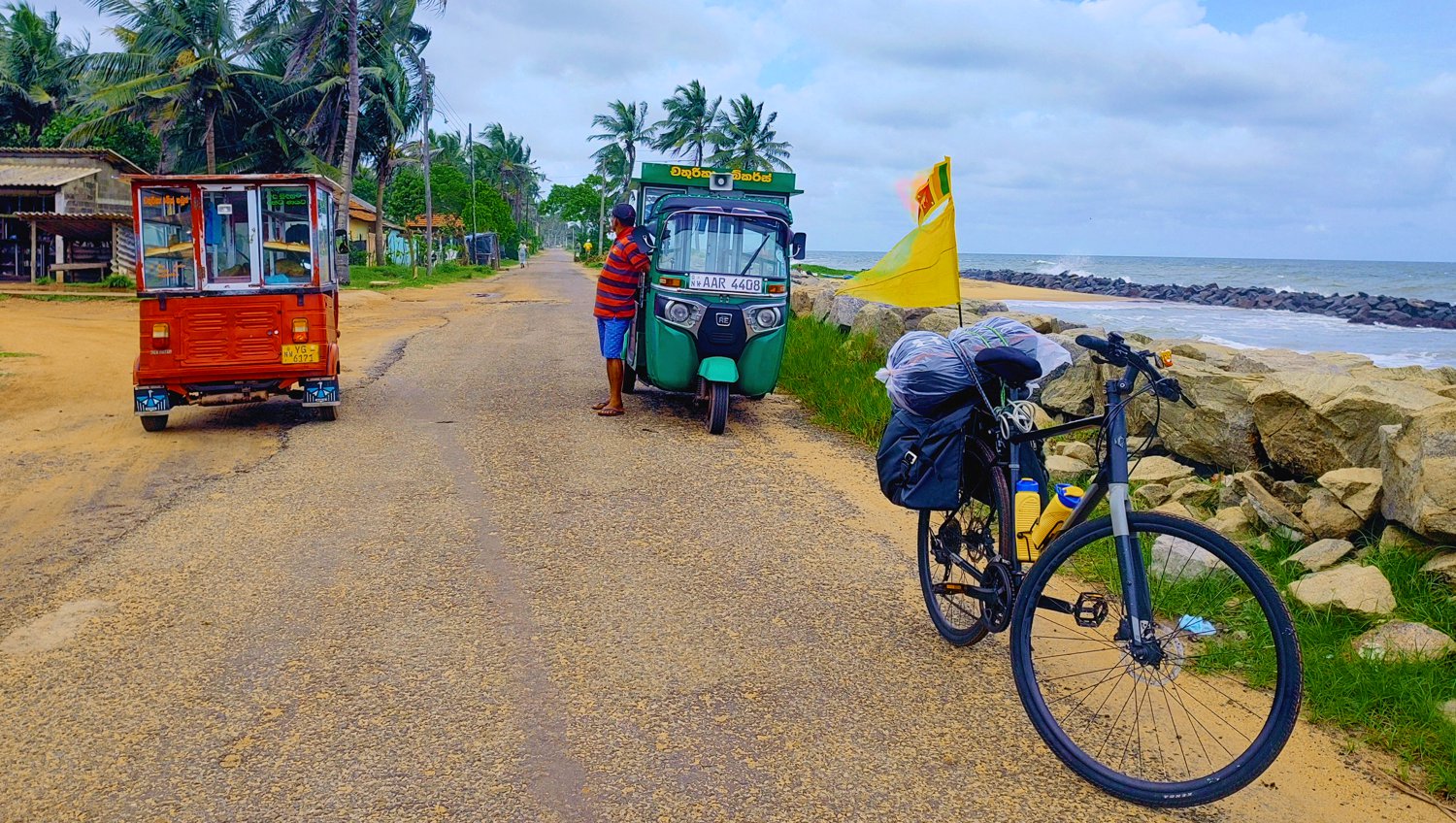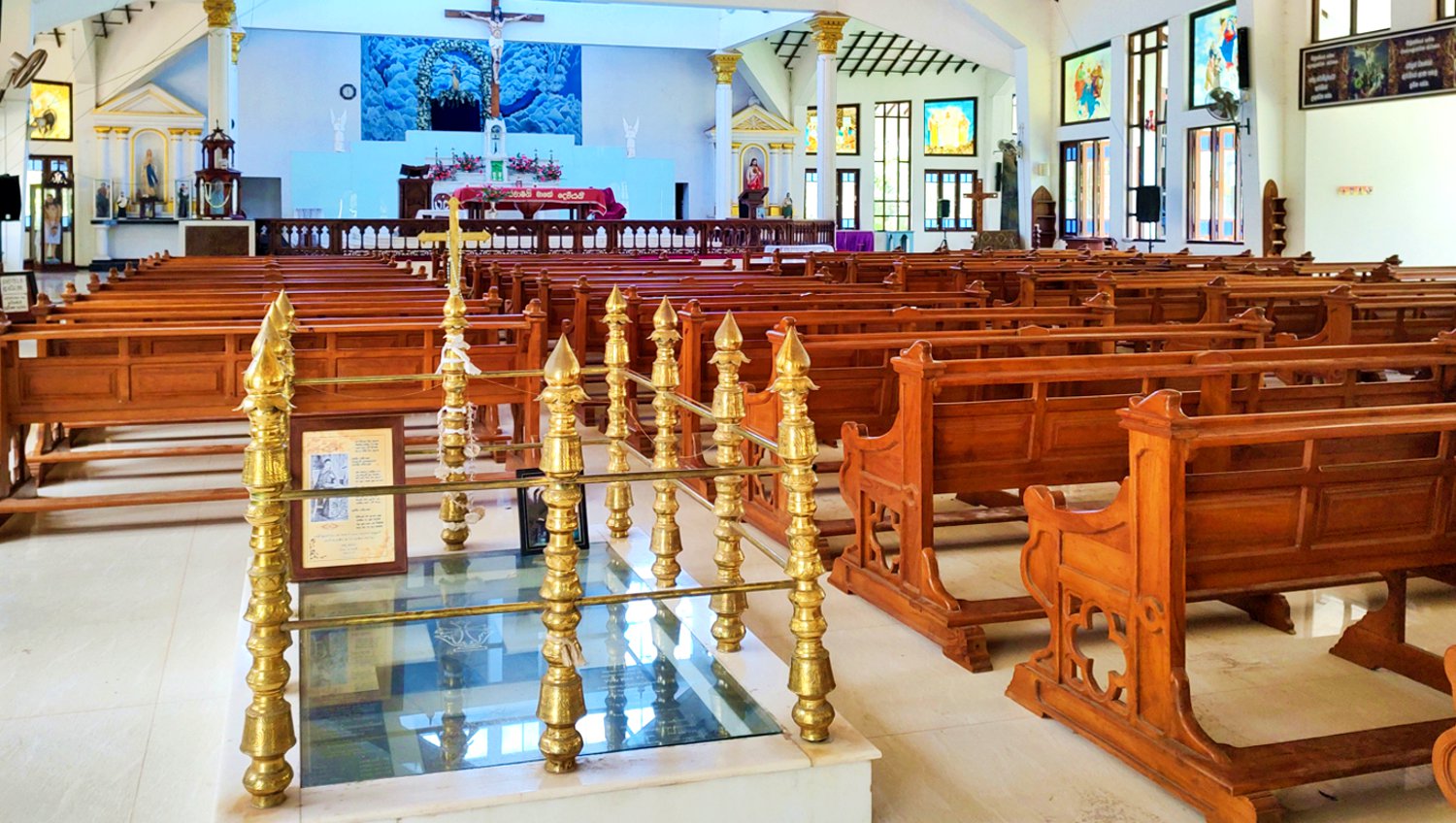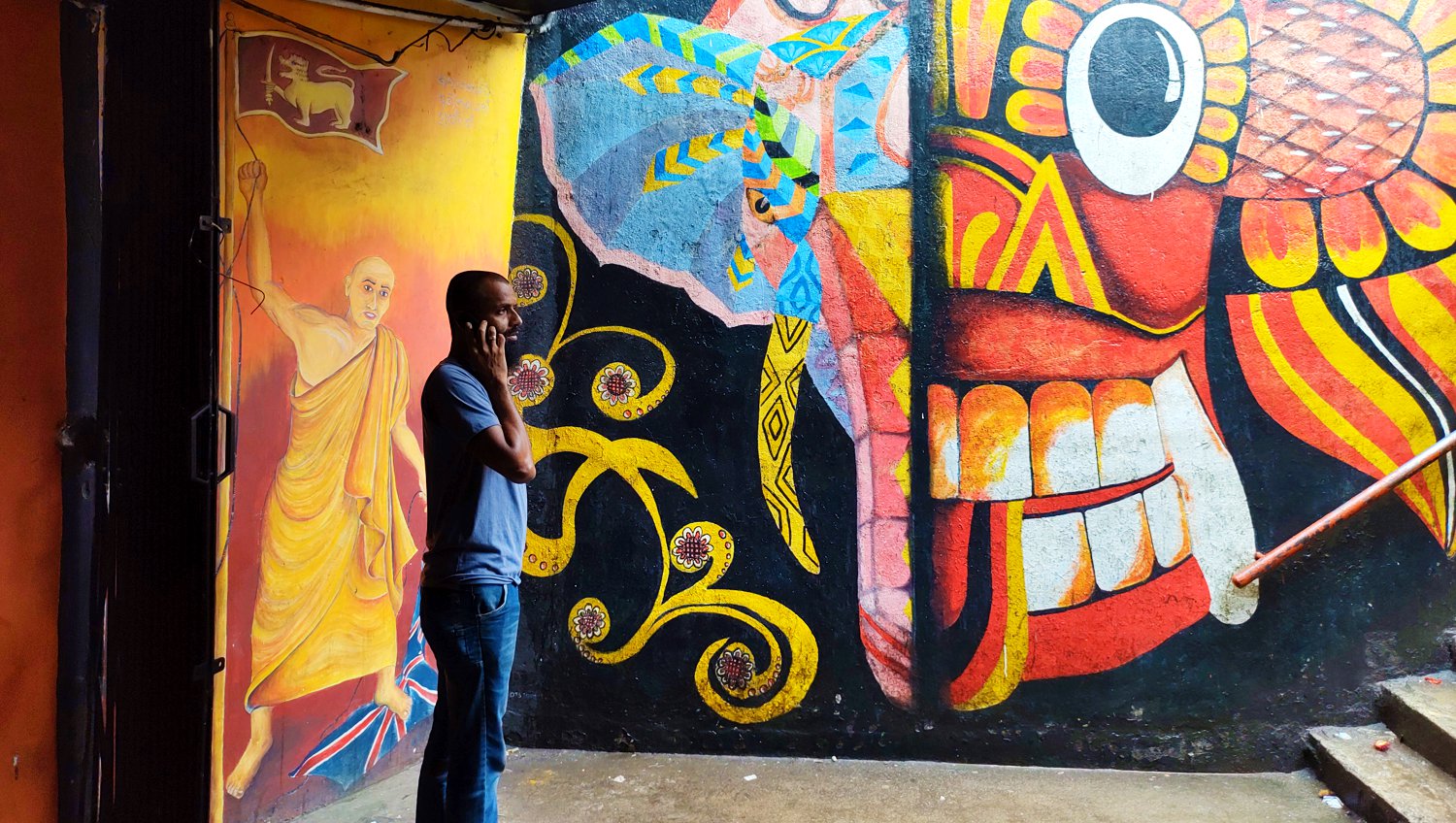
In 1686, Father Jose Vaz arrived in Ceylon (now Sri Lanka) as a missionary during the Dutch occupation, a period when Calvinism became the enforced official religion after the island’s takeover from the Portuguese. To evade persecution, he disguised himself as a labourer and travelled on a perilous journey across the island, offering the Eucharist and Sacraments to hidden groups of crypto-Catholics. Ultimately, he found refuge in the Kingdom of Kandy, where he could carry out his noble work more freely.
Born on April 21, 1651, in Benaulim, Goa, which is approximately 7 kms from where I stay, he was the third of six children. Ordained in 1675, he became a sought-after preacher, aspiring to follow in the footsteps of the great apostle of the Indies, St. Francis Xavier. Leading a pious life, he dedicated much of his time to prayer and caring for the poor and sick. For 24 years, he laboured tirelessly in the mission of Ceylon, successfully revitalizing the Catholic Church on the island. On January 16, 1711, at the age of 59, he passed away, leaving behind a legacy of dedication and service.
Due to his profound efforts, he came to be known as the Apostle of Ceylon. Recognizing his extraordinary contributions, he was considered a candidate for sainthood. Pope John Paul II beatified him on January 21, 1995, and later Pope Francis canonized him on January 14, 2015, during an inspiring open-air Mass ceremony at the Galle Face Green in Colombo.
During my 2200 kms cycling journey across Sri Lanka, I came across many statues of St. Jose Vaz, particularly along the west coast. These statues were often installed along the roadside, reminiscent of the crosses we find in Goa. Among other popular statues were those of St. Anthony and St. Sebastian.
One interesting difference I noticed in the statues of St. Vaz in Sri Lanka compared to those in Goa is that the statues in Goa are typically portrayed with a mitre on a pedestal next to him. However, in Sri Lanka, the statues of St. Vaz lack this particular feature. The reason for the mitre on a pedestal is connected to a historical event in 1703 when Pope Clement XI (1700-1721) sent a legate who proposed to nominate Jose Vaz as the Vicar Apostolic of Ceylon. Despite the prestigious offer, he humbly declined and remained steadfast in his dedication to his missionary work.
Exploring three significant pilgrimage places
During my visit to Sri Lanka, I had the privilege of exploring three significant pilgrimage places associated with the saint: Kandy, Wahakotte, and Weuda. These sacred sites hold deep spiritual significance and bear testimony to the remarkable impact of St. Vaz’s mission in Sri Lanka.
St. Jose Vaz Shrine, Kandy
In Kandy, situated 3 kms away from the Temple of the Sacred Tooth, stands a small shrine dedicated to St. Vaz, established in the year 2000. Inside the chapel, there is a wooden statue of St. Vaz, alongside a painting depicting him fervently praying for rain. This artwork holds historical importance as it dates back to 1696 when the Kingdom of Kandy was gripped by a severe drought. In desperate need of rain, King Vimaldharna Surya II sought the intercession of St. Vaz, who responded by erecting an altar and offering prayers. Astonishingly, the skies opened up, and abundant rain fell, yet the area surrounding the altar remained dry. Impressed by this miraculous occurrence, the king granted St. Vaz a license to preach throughout the kingdom.
St. Anthony Cathedral, Kandy
At the heart of the city stands the St. Anthony Cathedral, where the sacred relic of St. Anthony is enshrined. Within the cathedral, one can find two statues of St. Vaz, one inside and the other outside, along with a captivating painting.
Wahakotte
Nestled within the tranquil village of Wahakotte, a traditional Catholic settlement with roots dating back to the Portuguese era, lies a place of immense historical and spiritual significance. Approximately 25 kilometers from Dambulla, this charming village holds a unique connection to the revered St. Jose Vaz, who once embarked on a challenging journey through the region on foot, en route to the Kandyan Kingdom from the island’s northern realms.
Perched atop a hillock stands a revered church dedicated to St. Anthony, symbolizing devotion and faith. The site’s importance is magnified by the presence of a miraculous statue of St. Anthony, which was graciously presented to the villagers of Wahakotte by St. Vaz himself. This treasured gift was bestowed upon him by the King of Kandy during his stay in the region, a time when the two forged a close and meaningful friendship.
Within the church compound, history unfolds through the presence of a large granite cross and an octagonal structure housing the altar. This hallowed ground is believed to be where St. Jose Vaz conducted holy masses, further elevating the sanctity and reverence of this spiritual sanctuary, igniting faith and devotion in the hearts of all who visit.
Weuda
Another significant site of great historical import is Weuda, situated 25 kilometers from Kandy. During the Dutch persecution era, Sri Lanka was without priests for nearly three decades. In 1687, St. Jose Vaz arrived in disguise and, in 1692, while en route to serve the people in Kandy, he was arrested and taken prisoner in Weuda by the King of the Kandyan Kingdom, who suspected him of being a Portuguese spy. However, in 1696, the King eventually released him and granted him the freedom to serve the Catholics of Kandy, as well as permission to construct a church in Weuda. Sadly, after St. Vaz’s passing in 1745, the new King of Kandy, Sri Vijaya Rajasinghe, destroyed the church, leading the Catholics of Weuda to seek refuge in Wahakotte. Later during the British rule, the Archbishop generously provided land in Weuda, with permission to build a church. On 11th August 1897, the church was dedicated to Our Lady of the Rosary and officially registered by the Government. A century later, the church faced ruin and required reconstruction. With the dedication of Kurunegala as a Diocese, the church was rebuilt and blessed by His Lordship Bishop Raymond Pieris, the new Bishop of Kurunegala. Subsequently, the church underwent complete renovation, thanks to the generosity of a devoted follower of St. Jose Vaz. On 4th November 2012, it was reconsecrated by the Bishop of Kurunegala, His Lordship Rt. Rev. Dr. Harold Anthony Perera.
Overall, the story of St. Jose Vaz and his significant contributions to Sri Lanka is a testament to his unwavering dedication to the faith and his tireless efforts in serving the Catholic community. The statues and pilgrimage sites scattered throughout the country serve as poignant reminders of his enduring legacy and the inspiration he continues to provide to those who follow in his footsteps.
Read more about St. Jose Vaz
https://en.wikipedia.org/wiki/Jose_Vaz
https://www.indiancatholicmatters.org/st-joseph-vaz-the-friday-miracle/
http://archives.dailynews.lk/2007/06/13/fea13.asp


